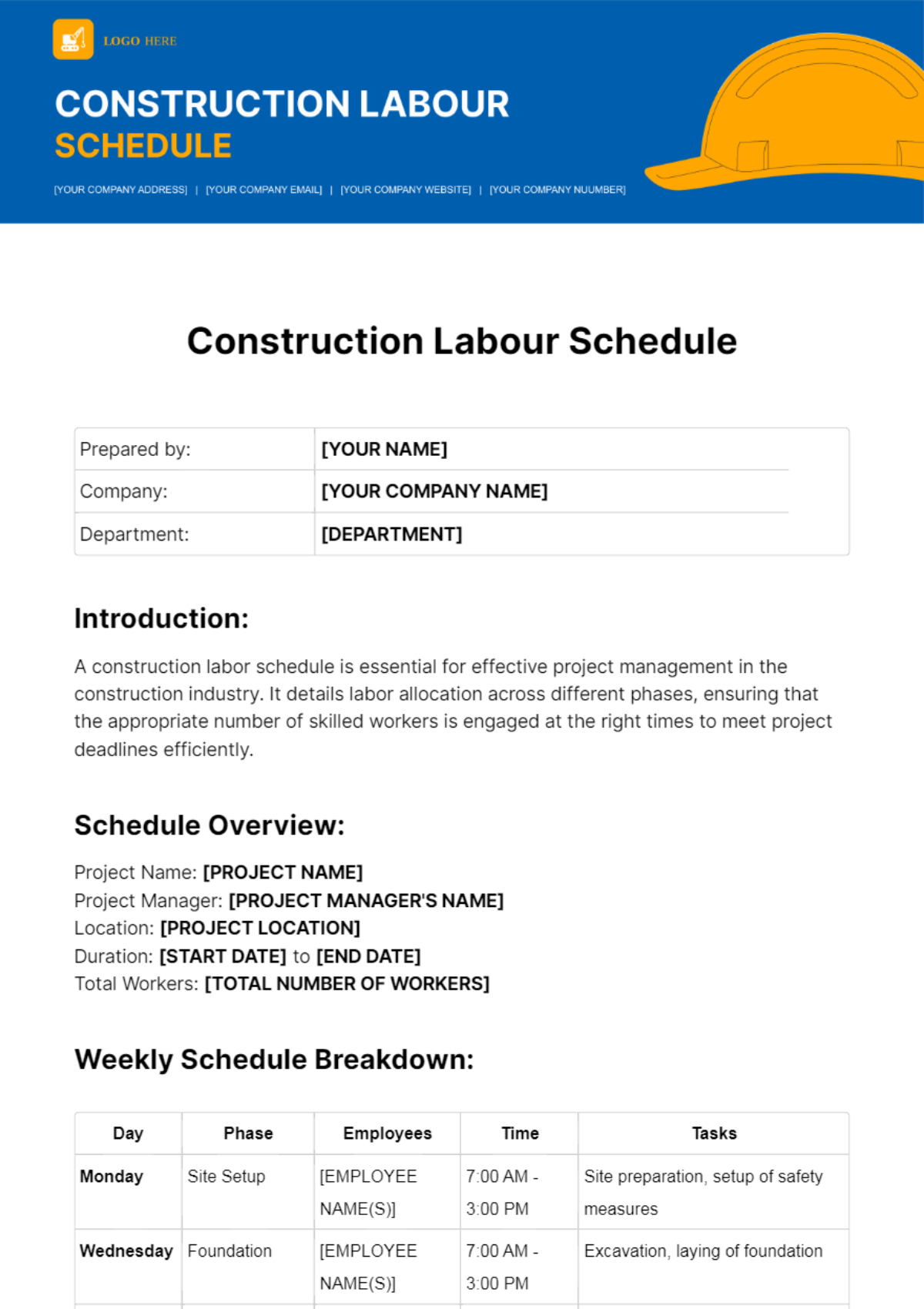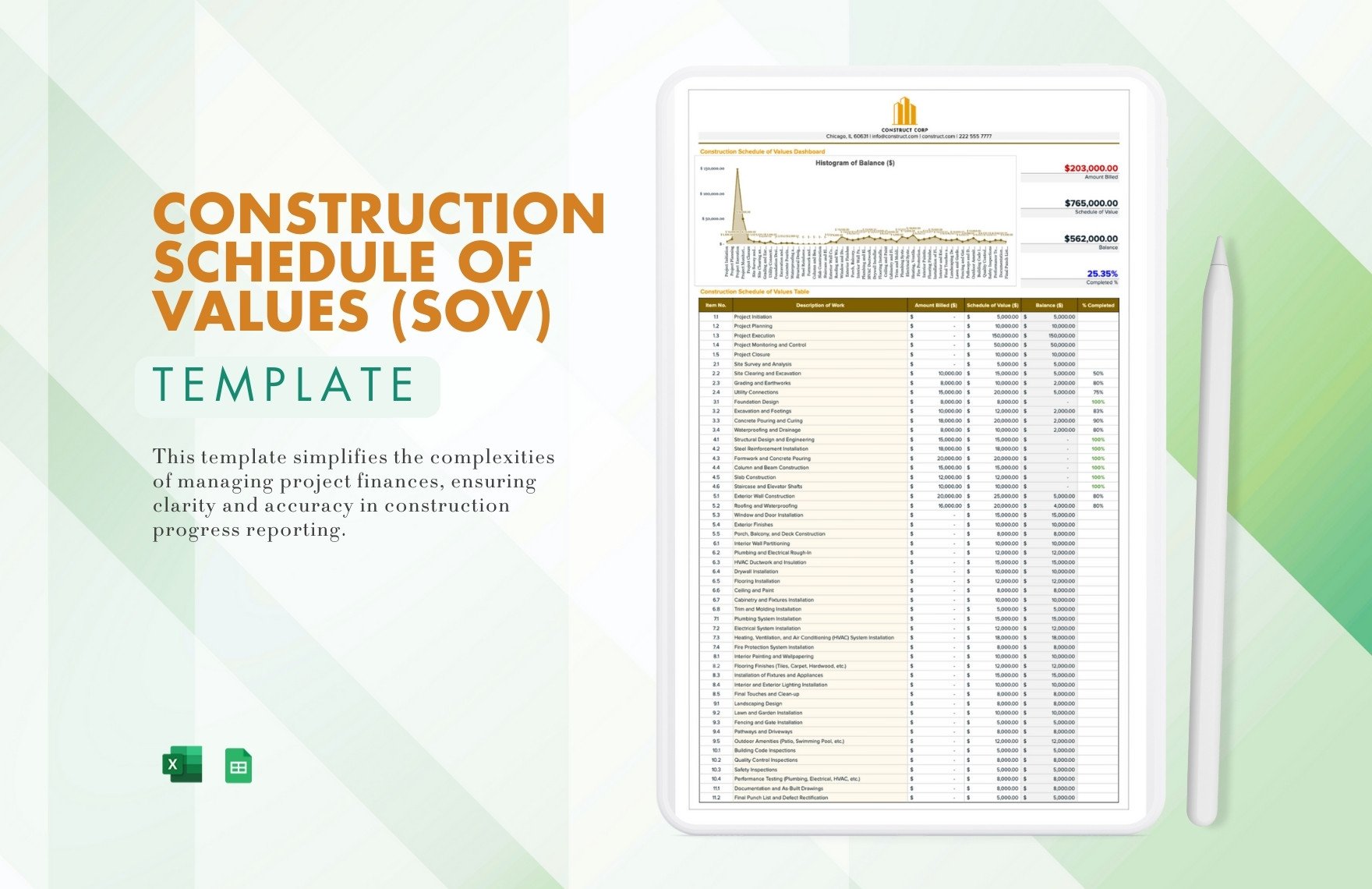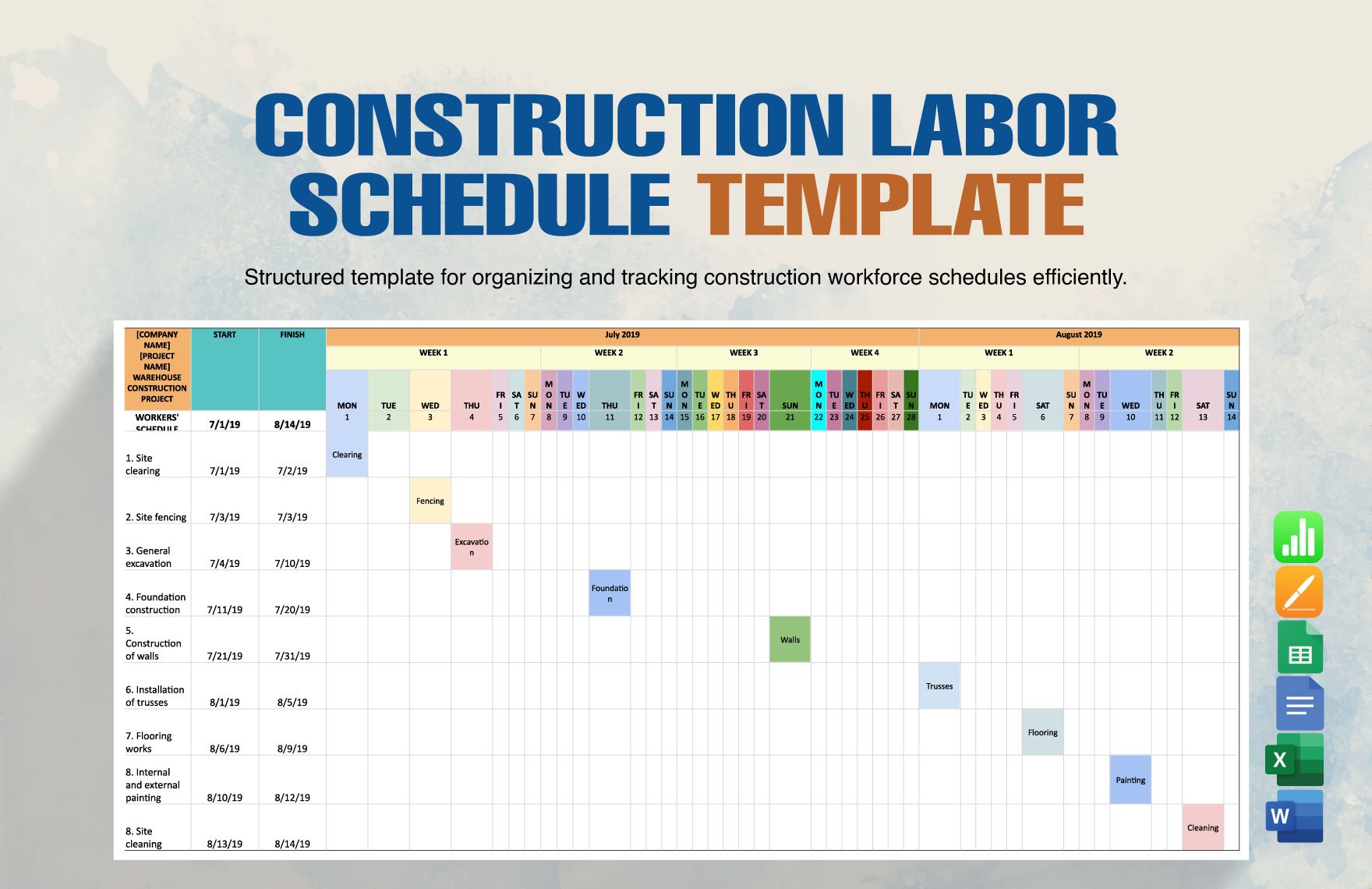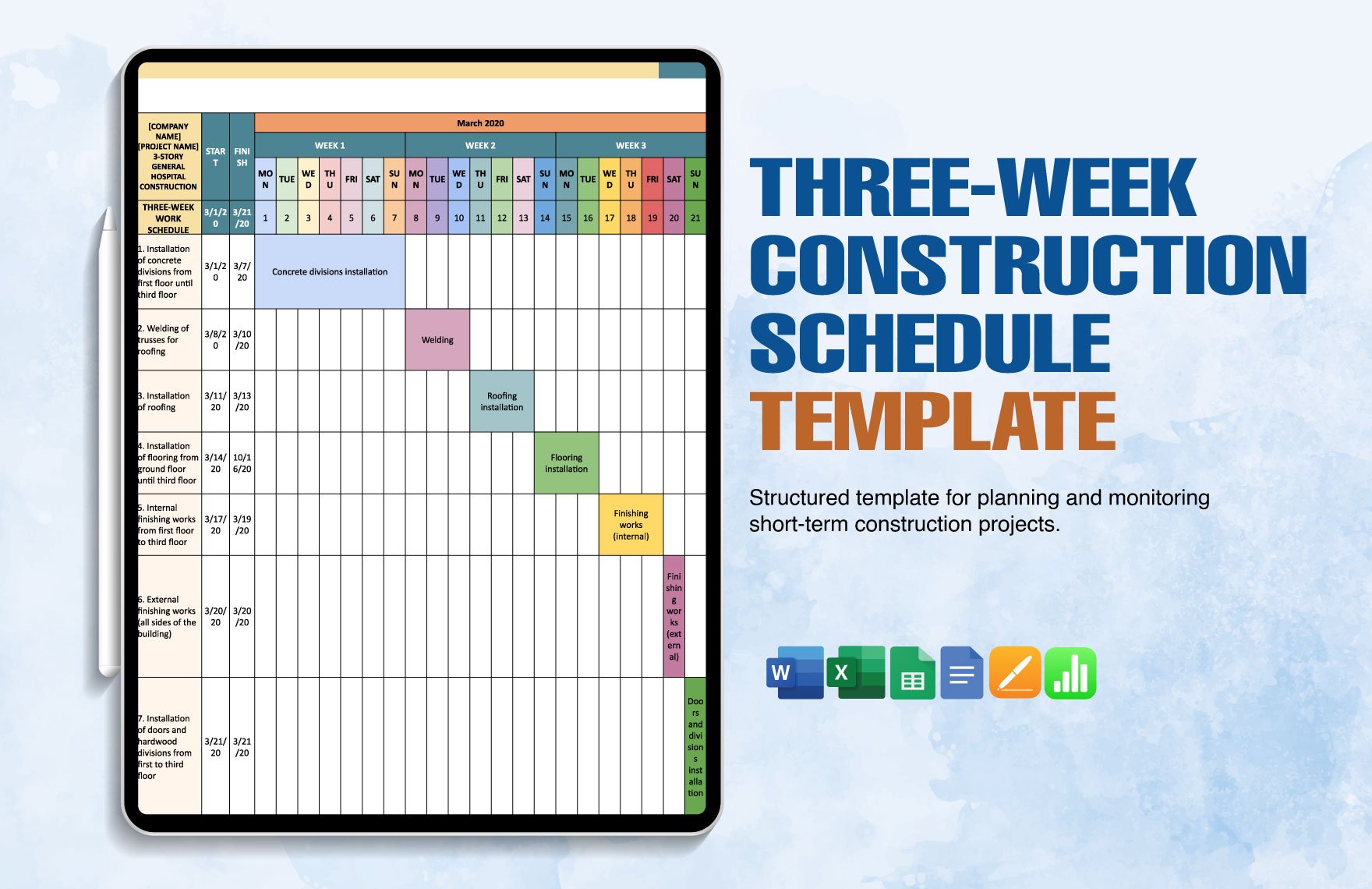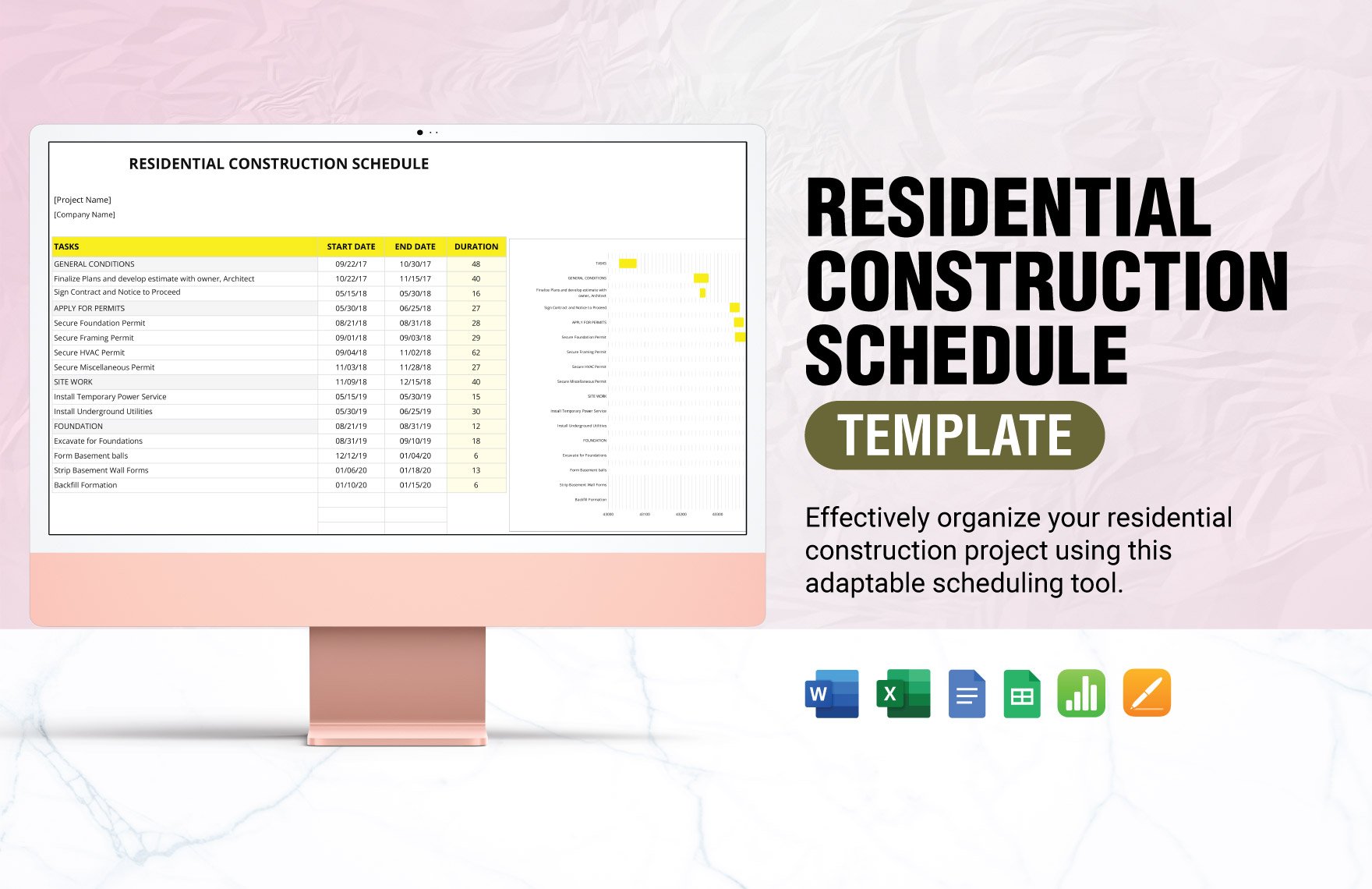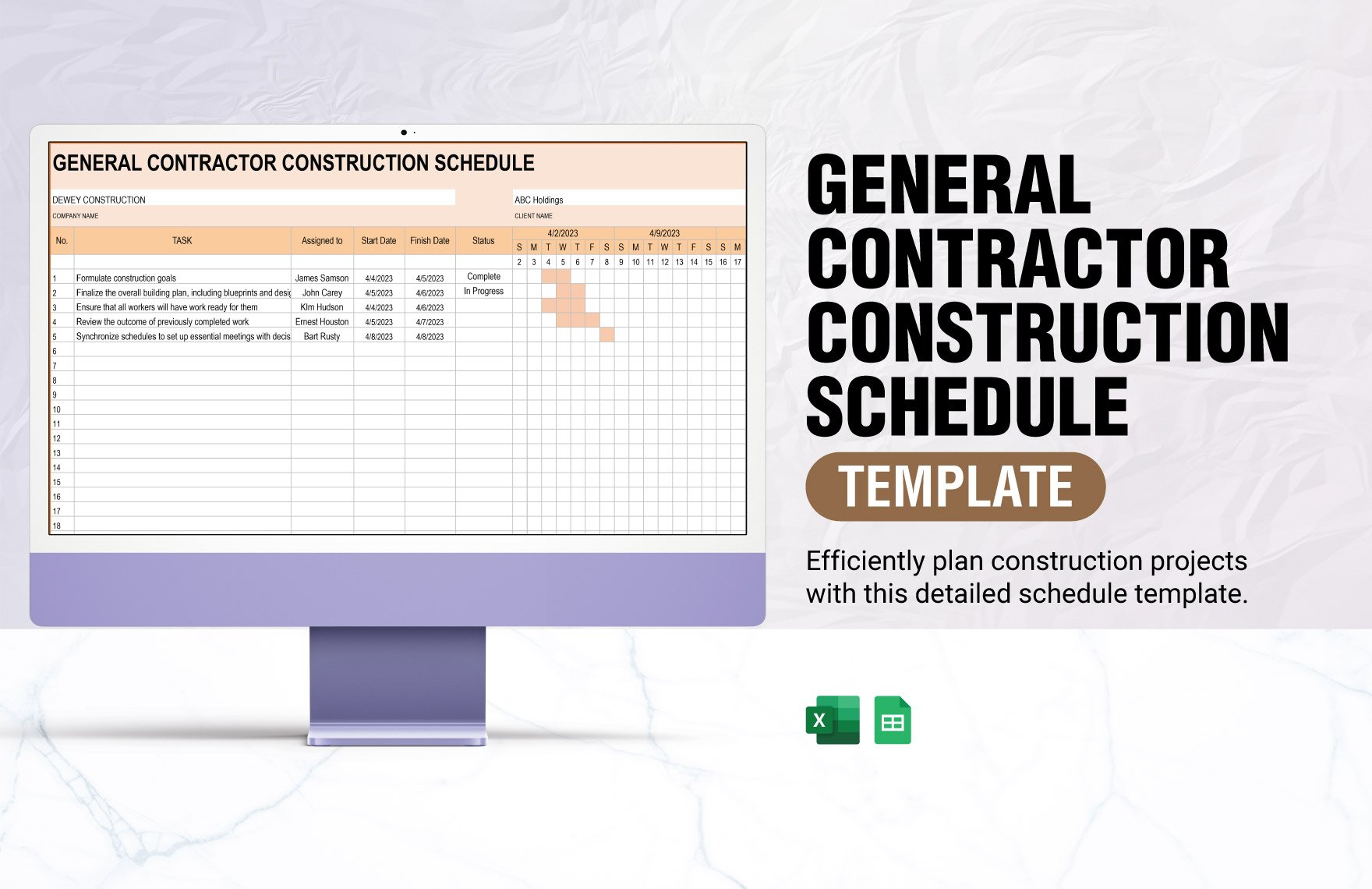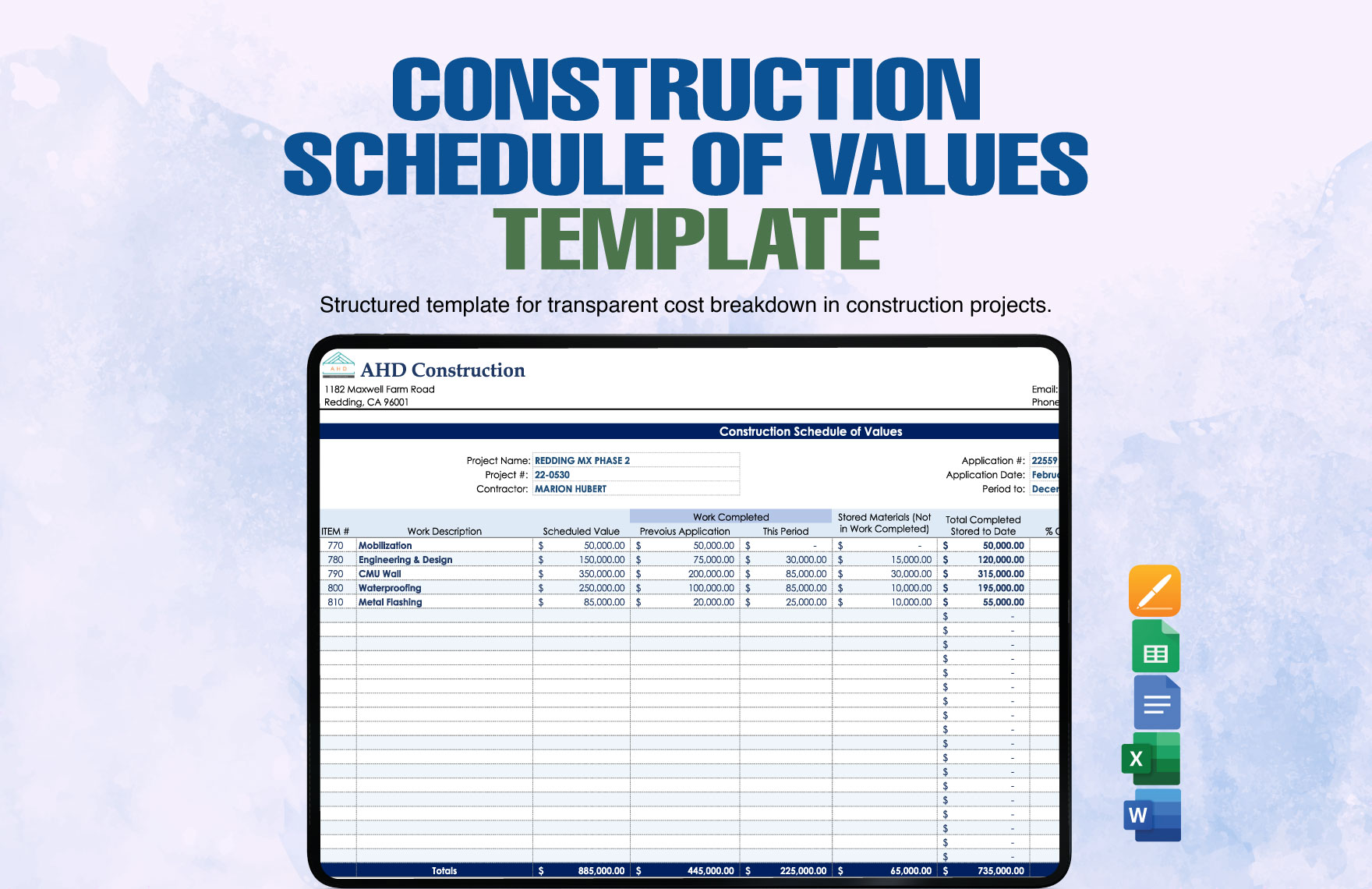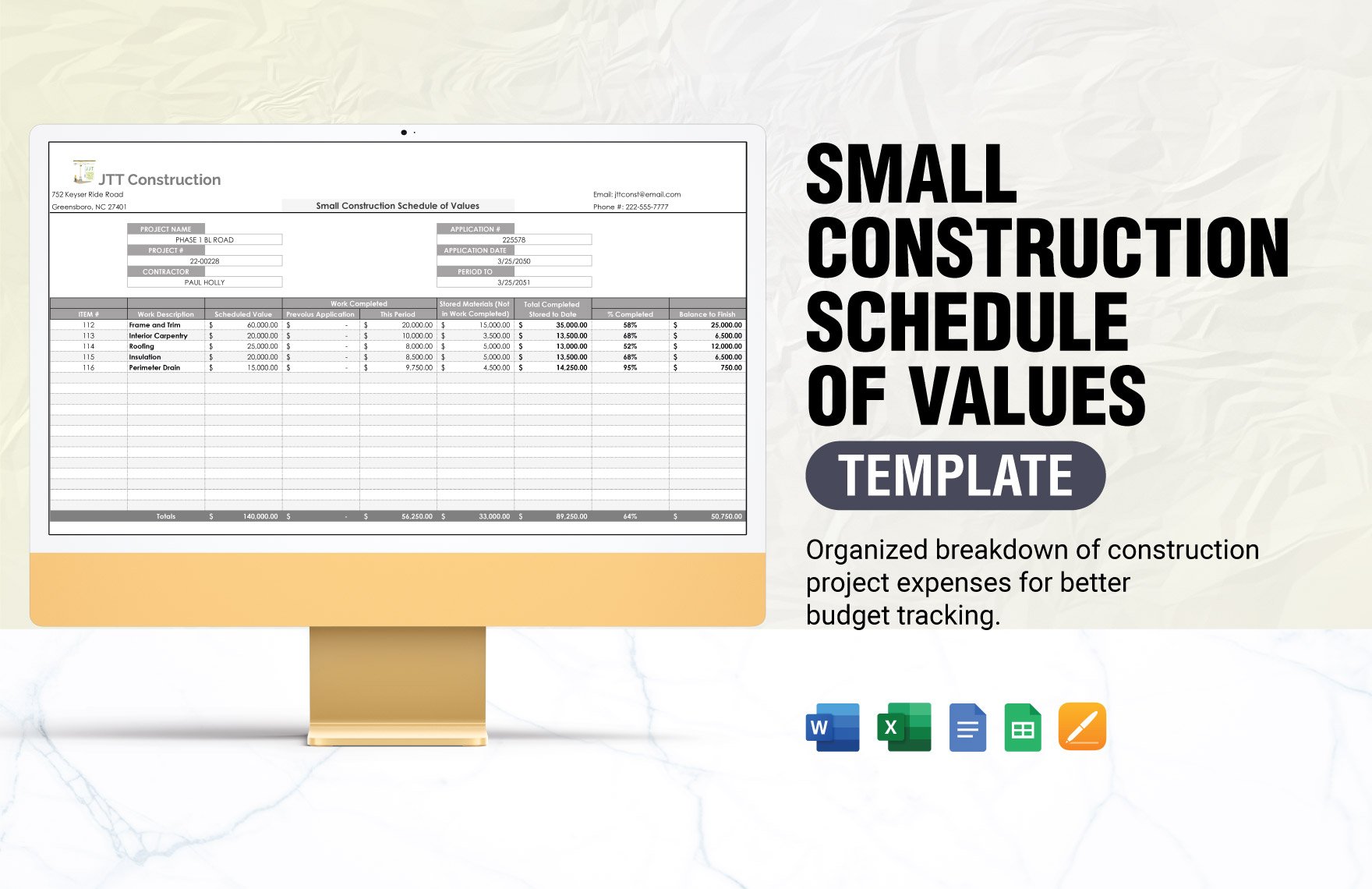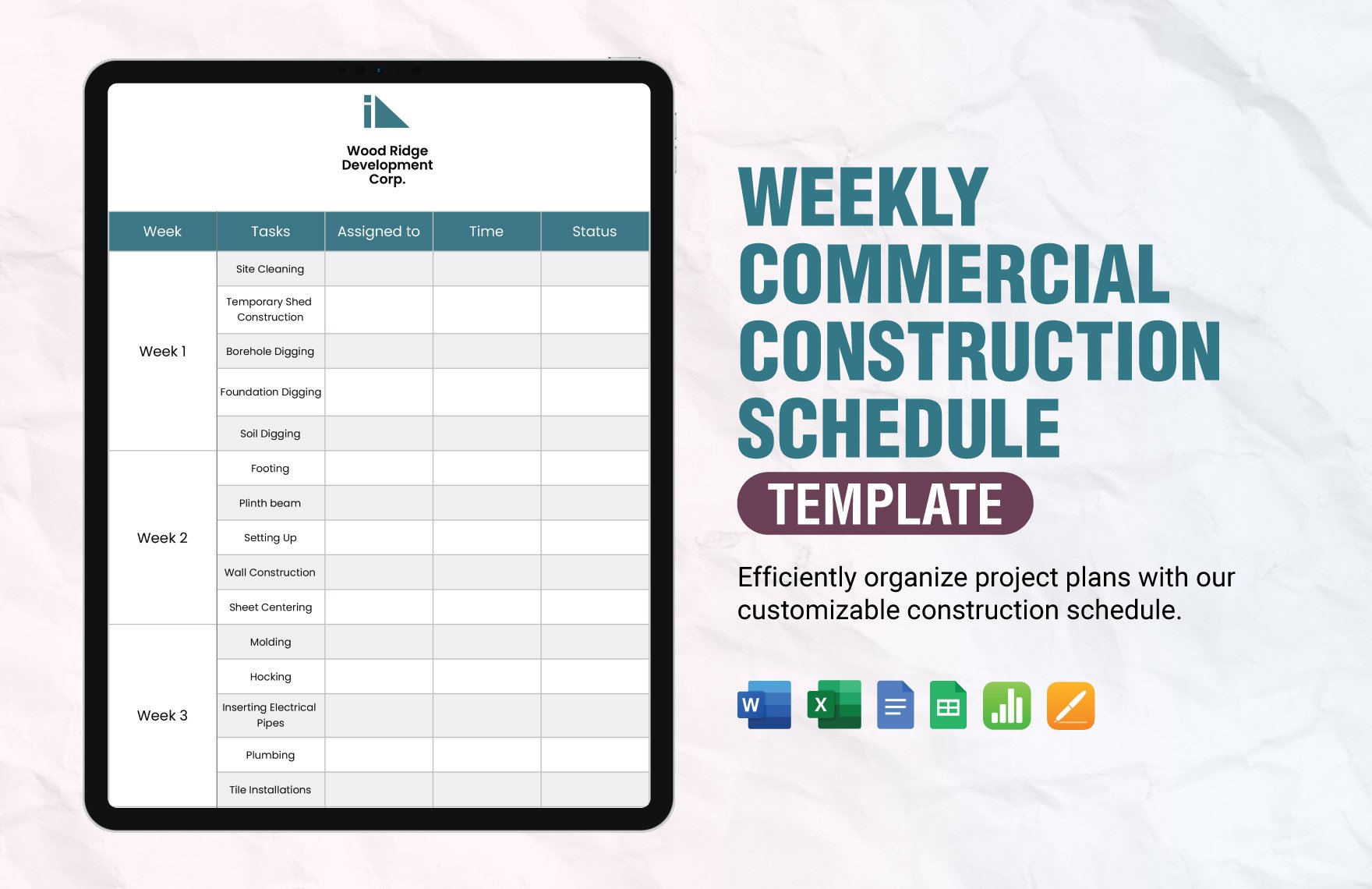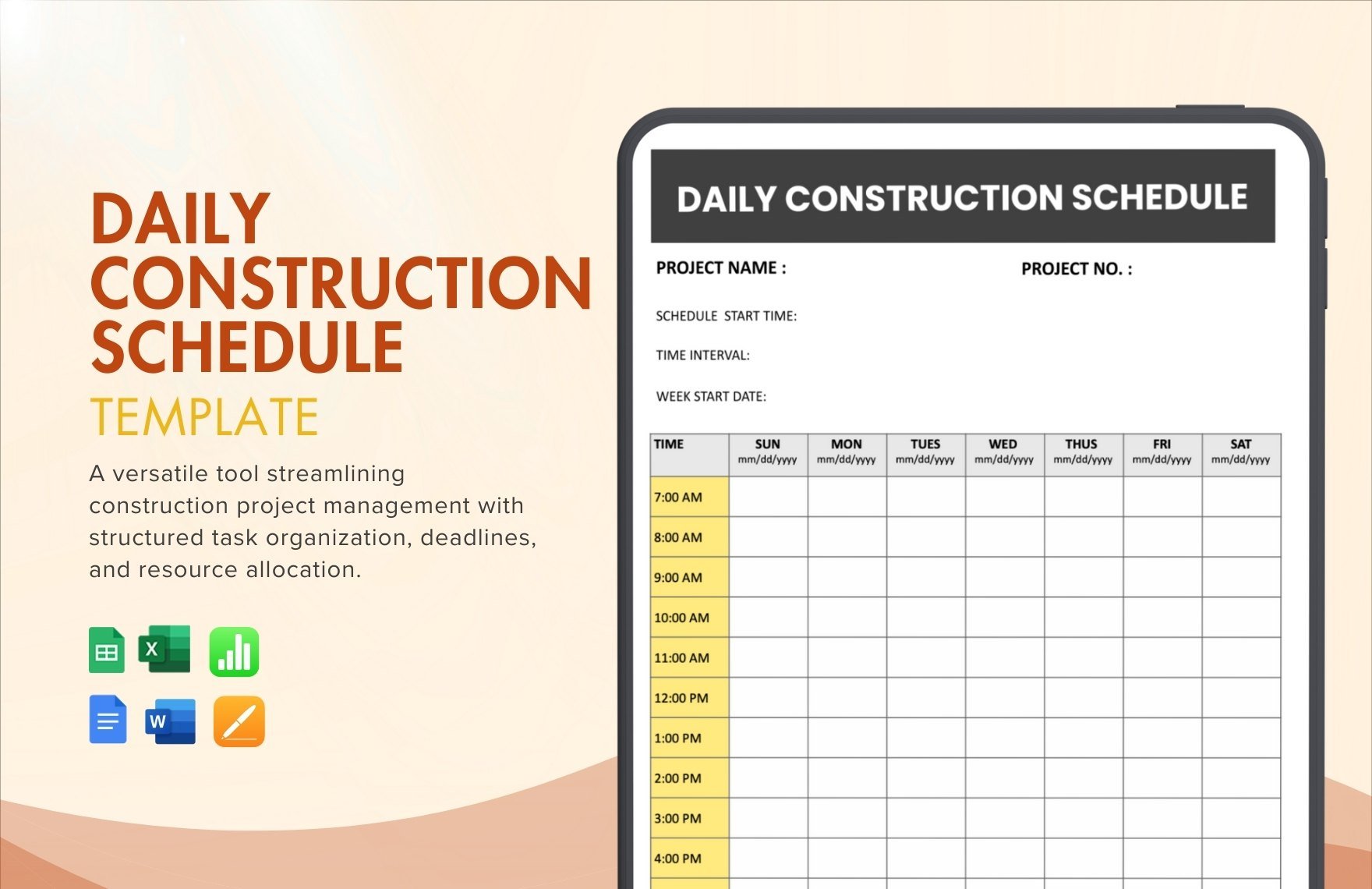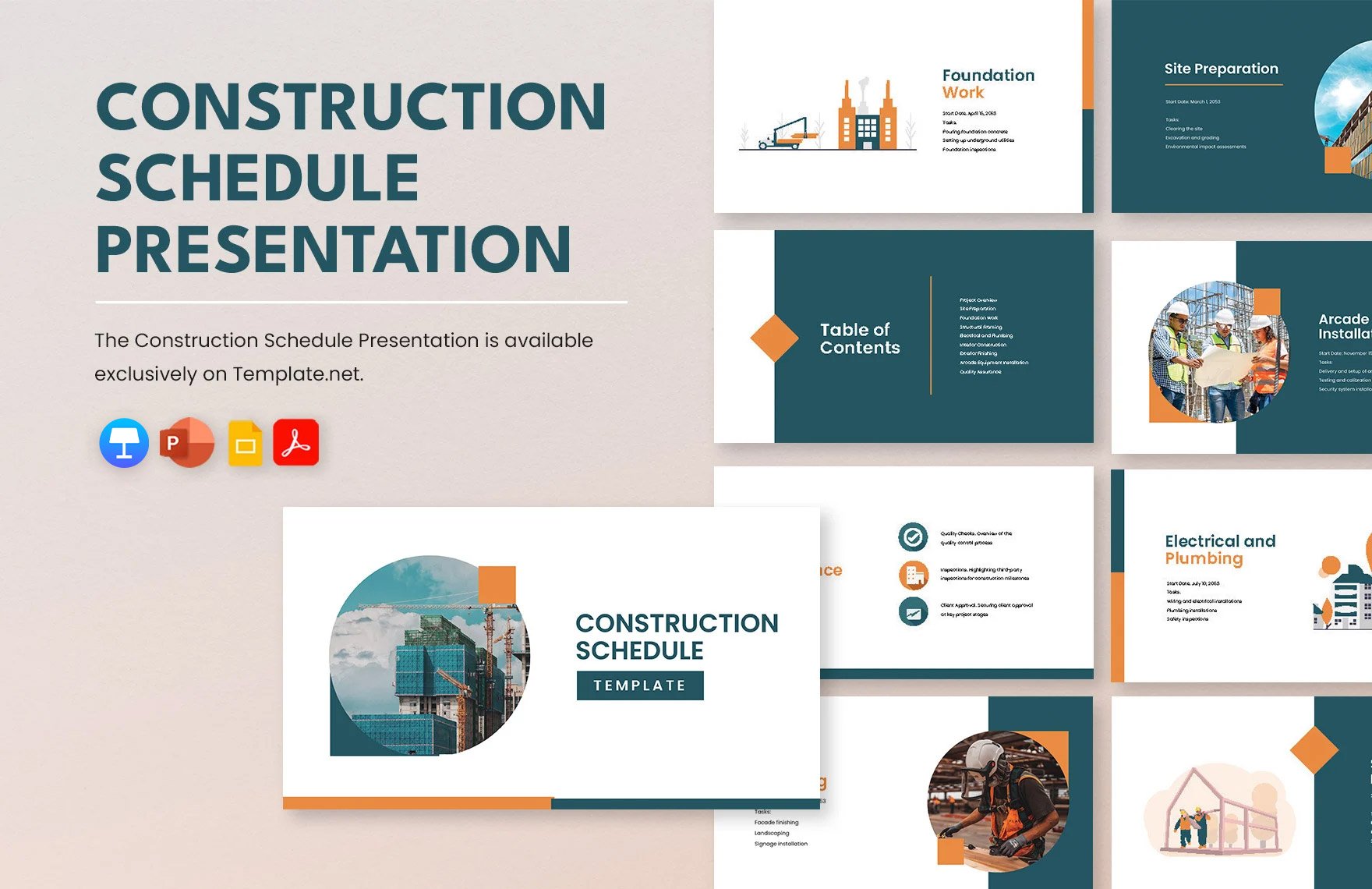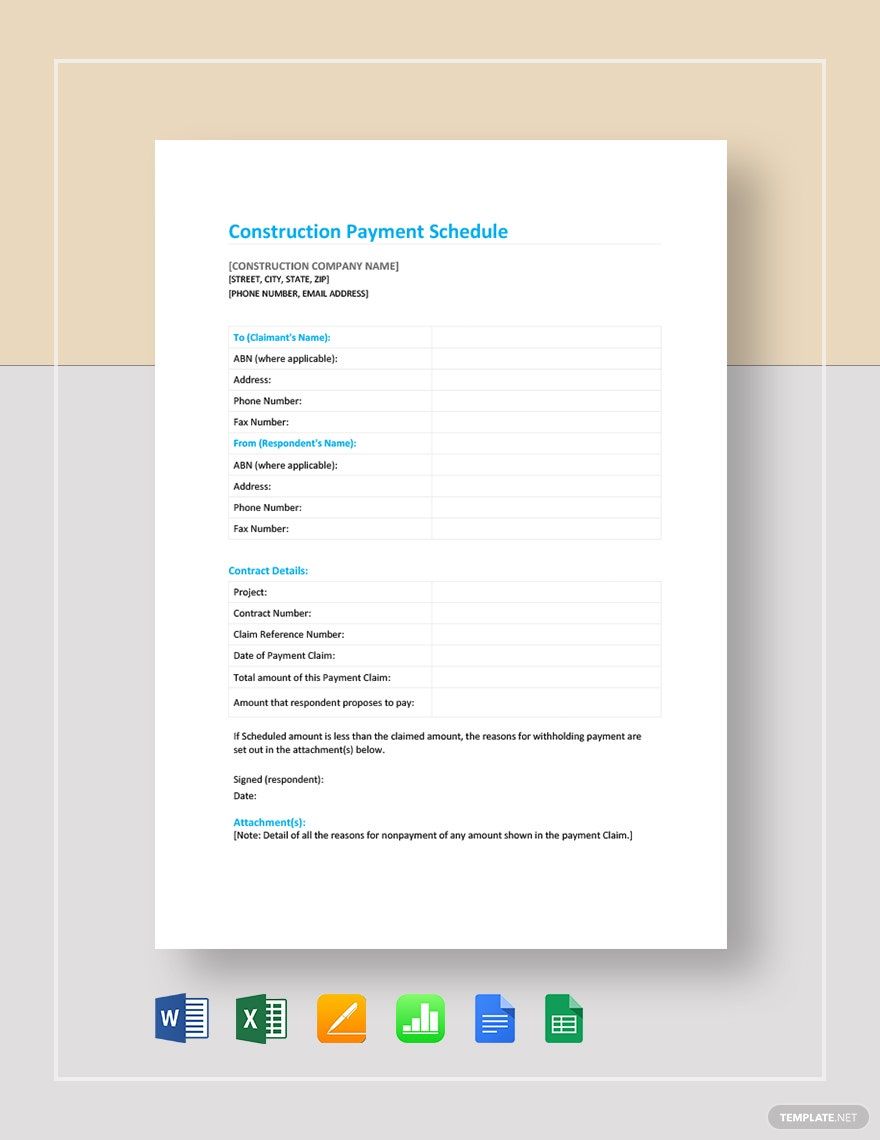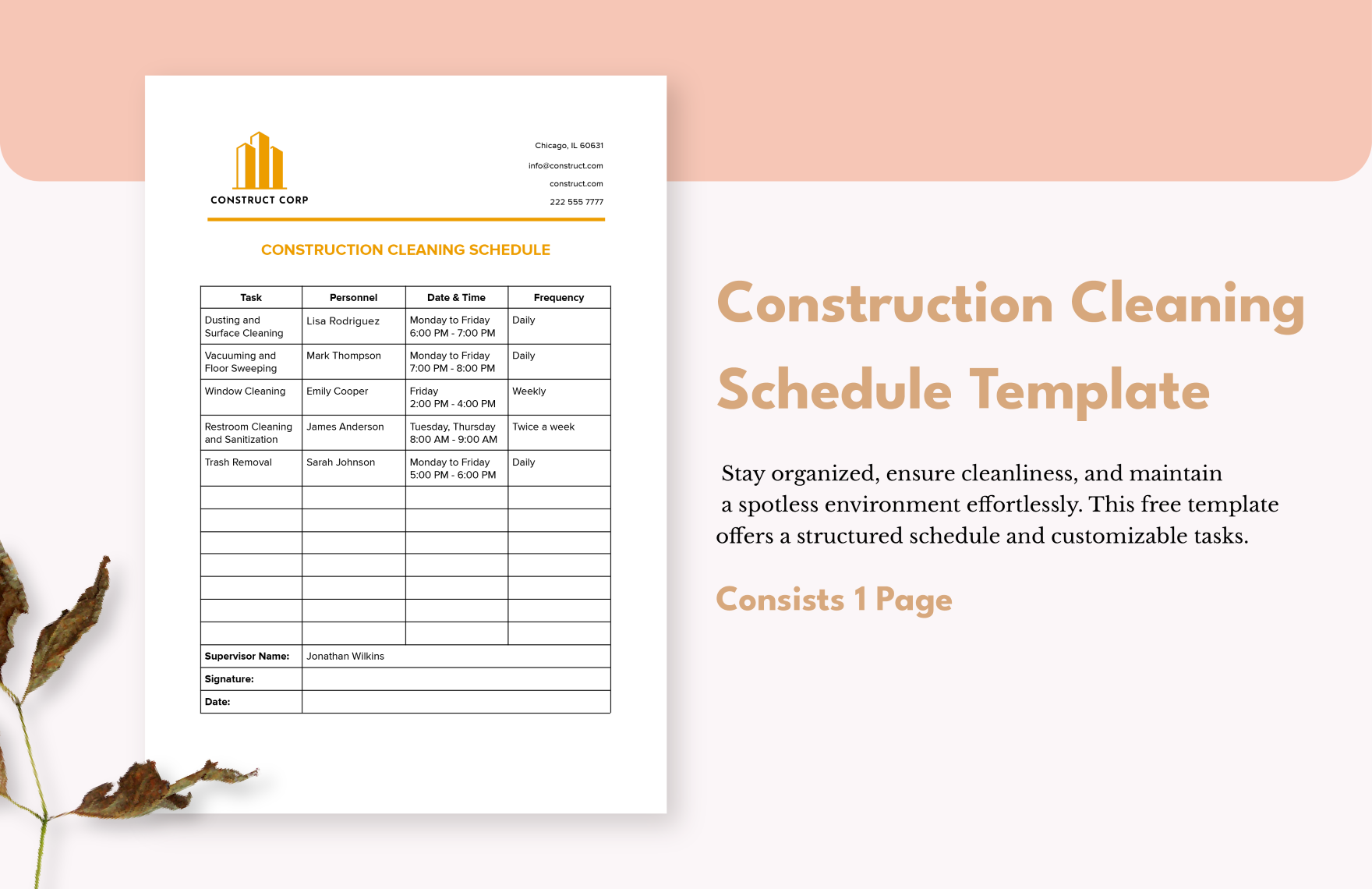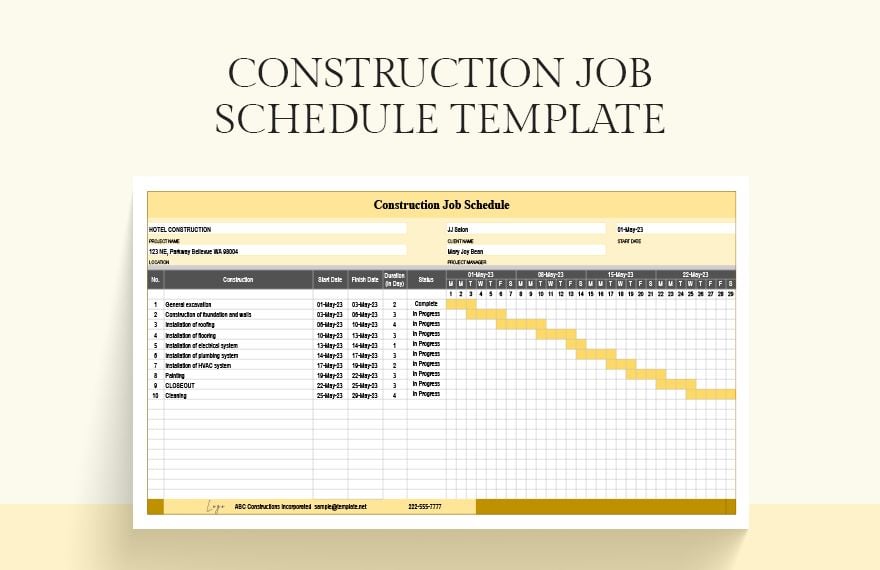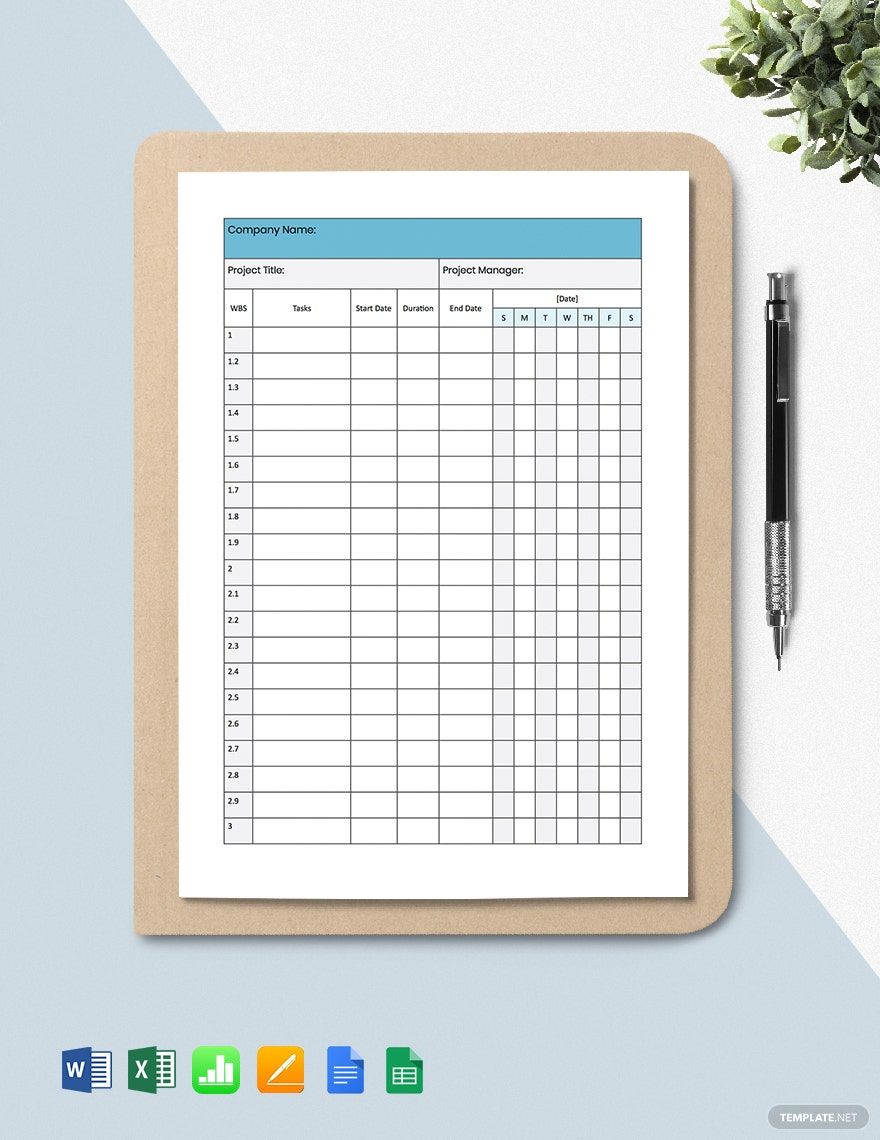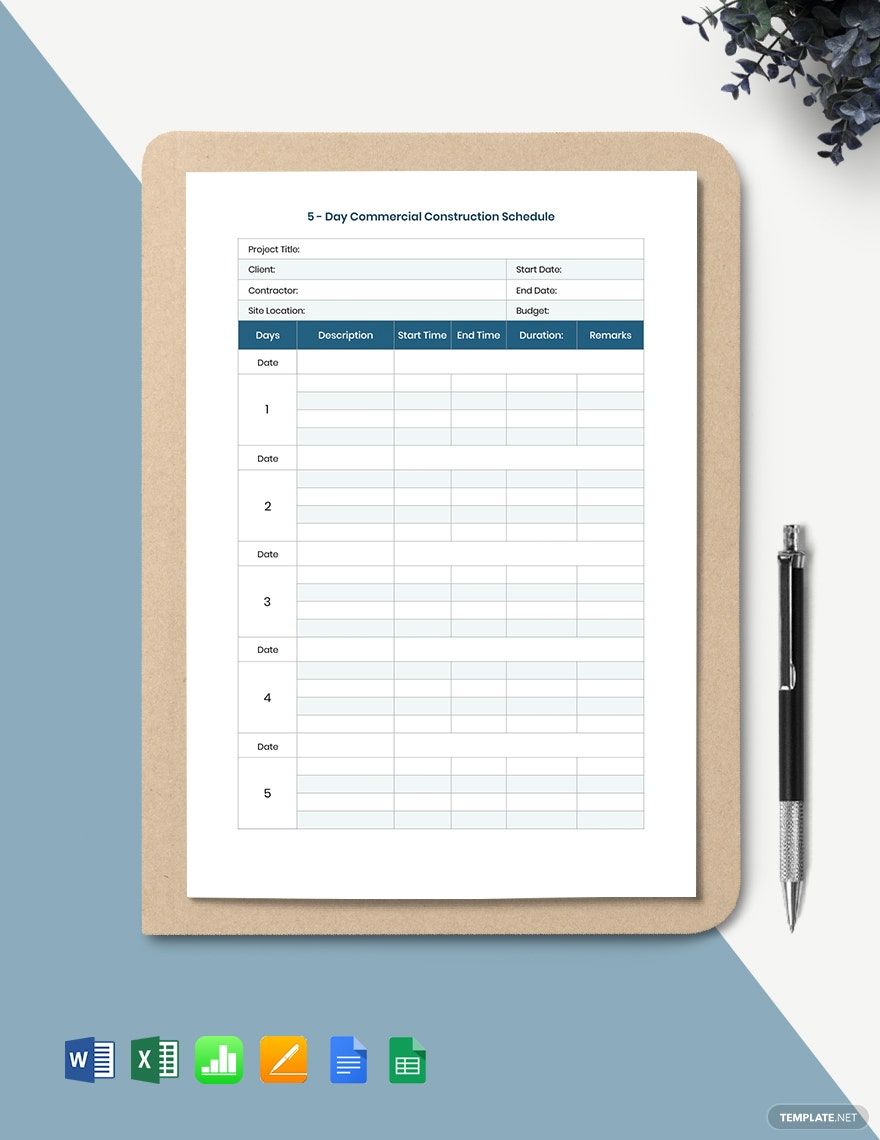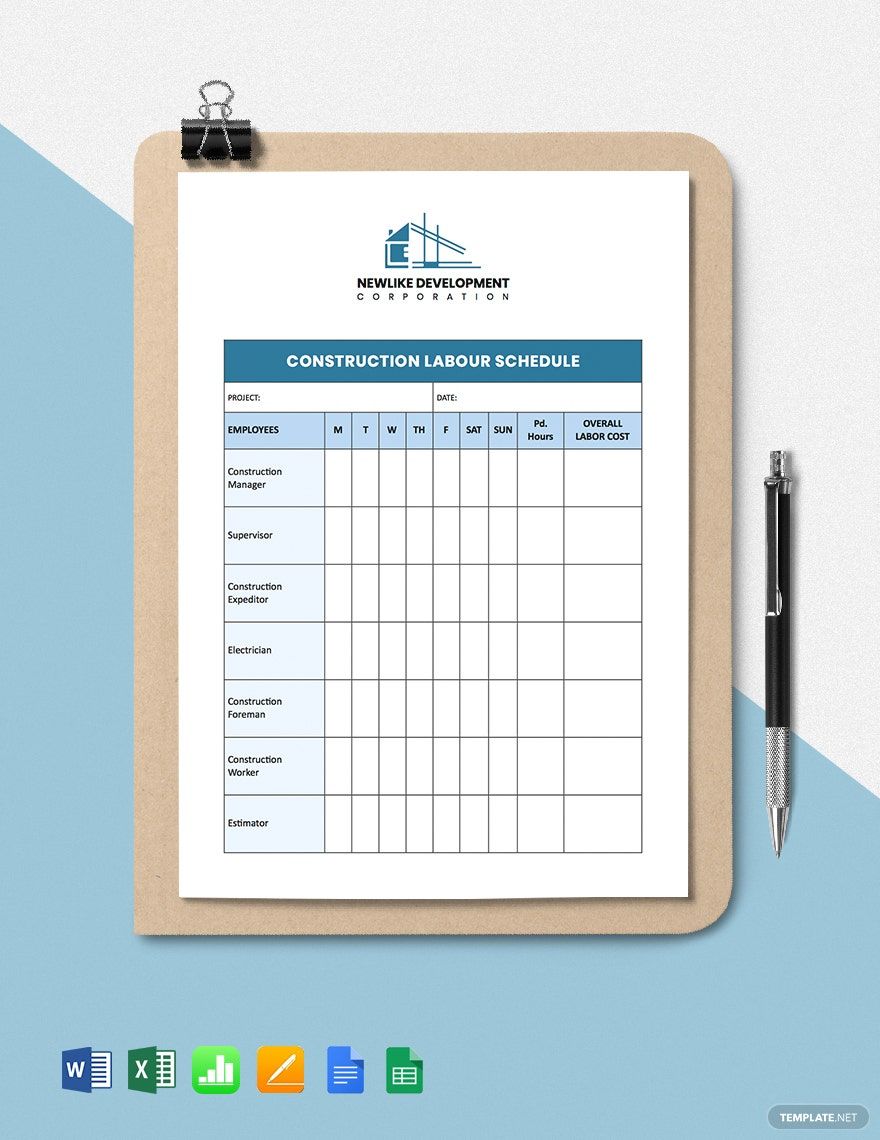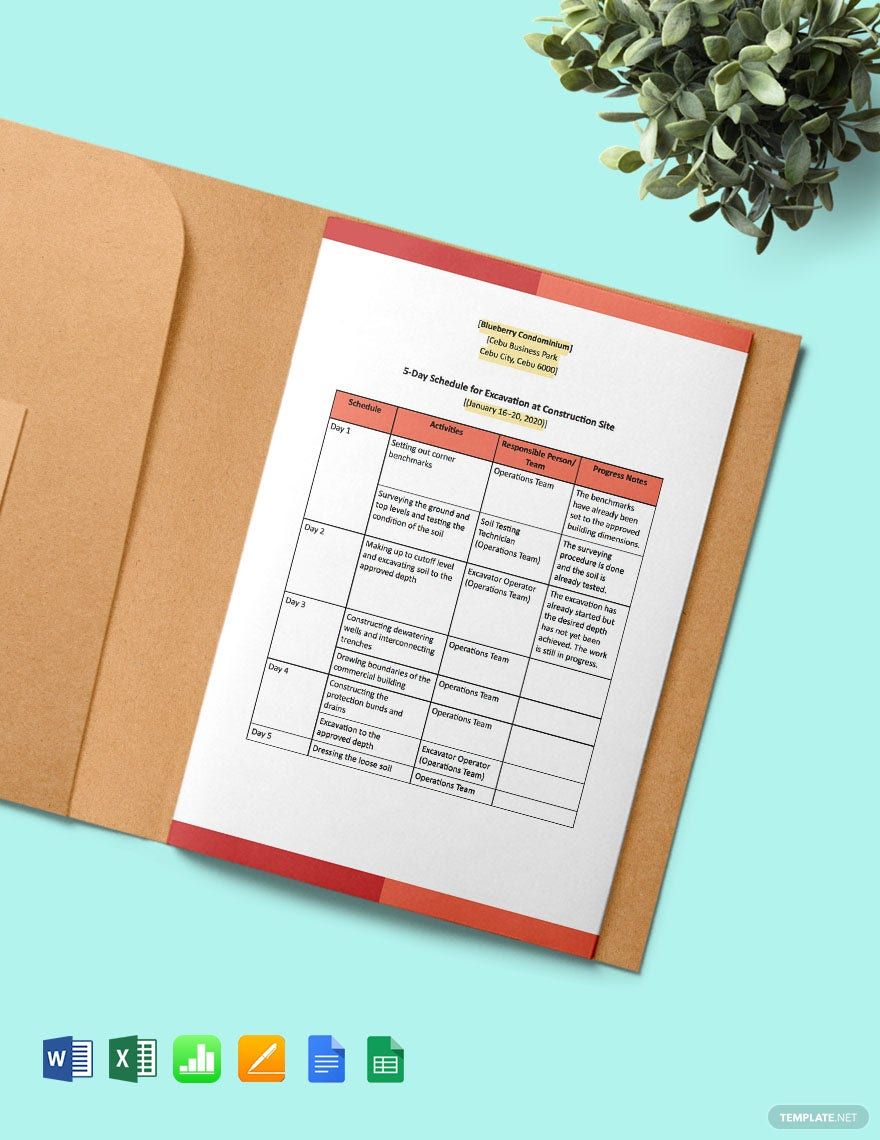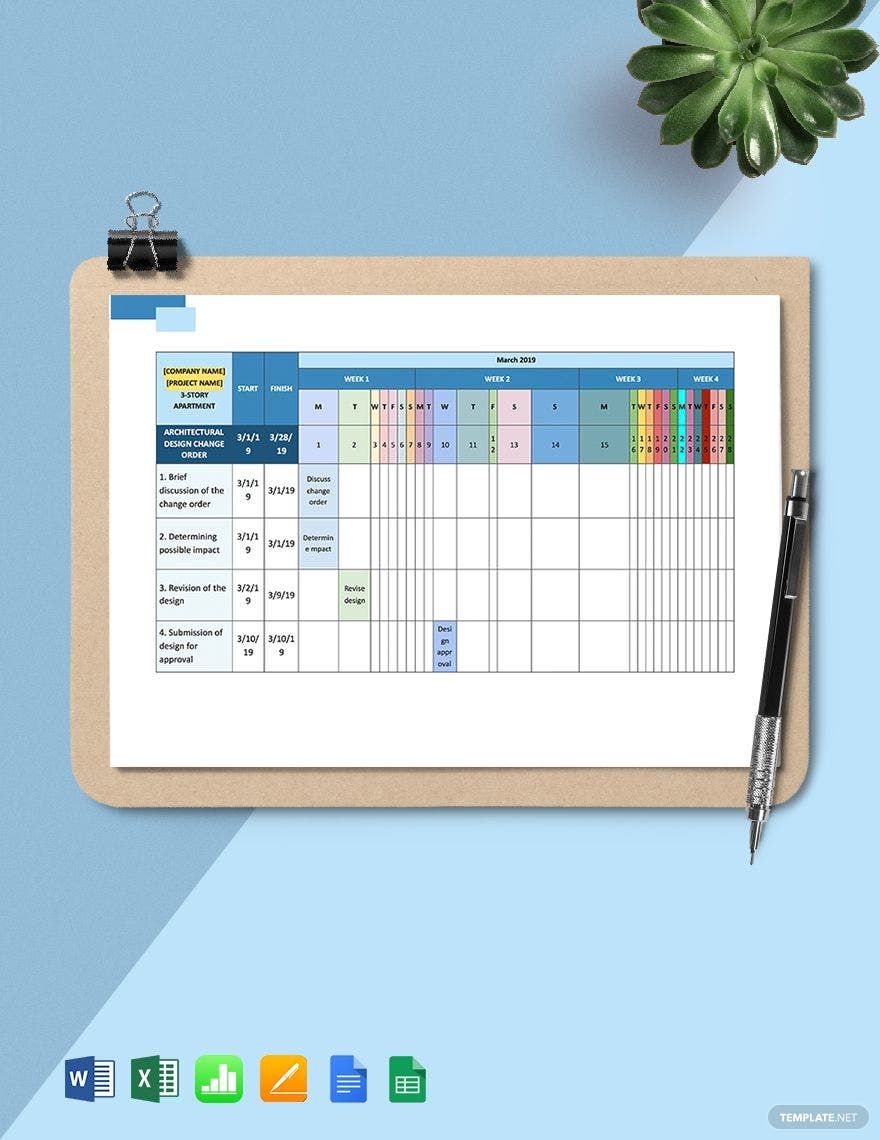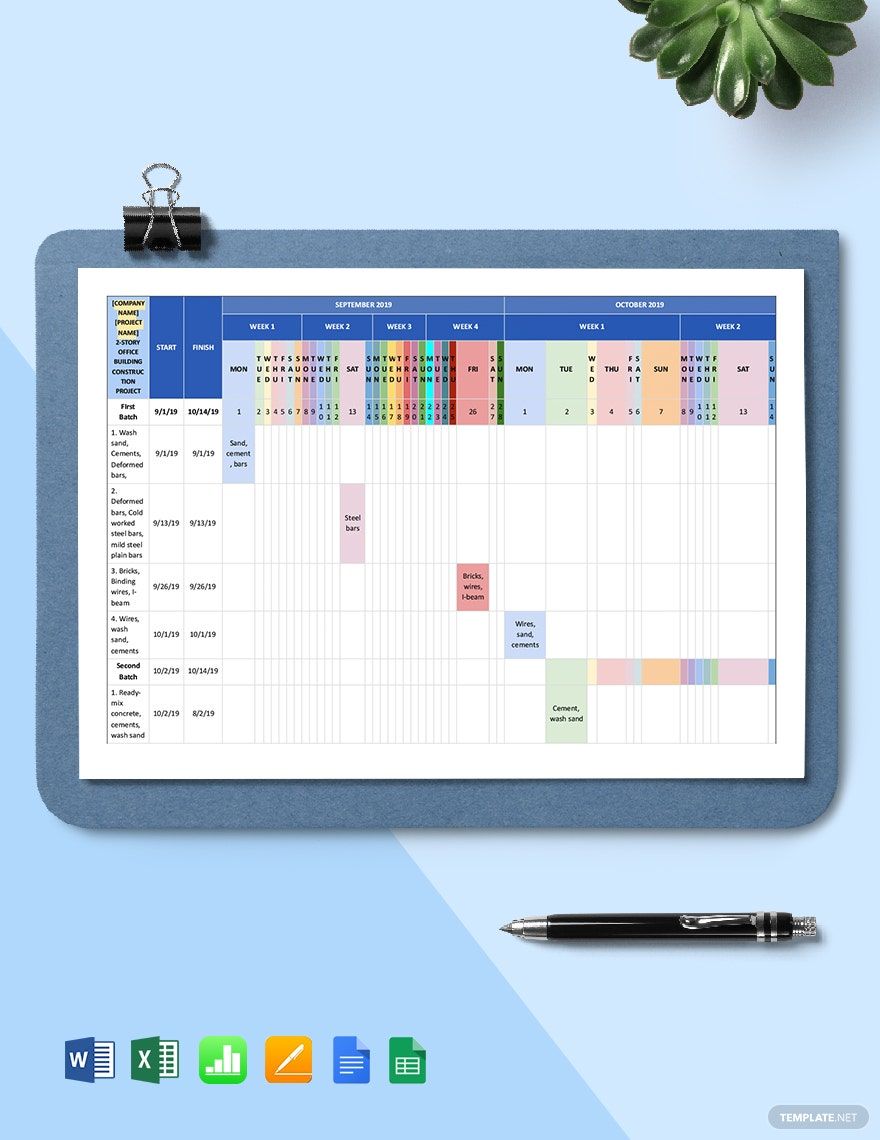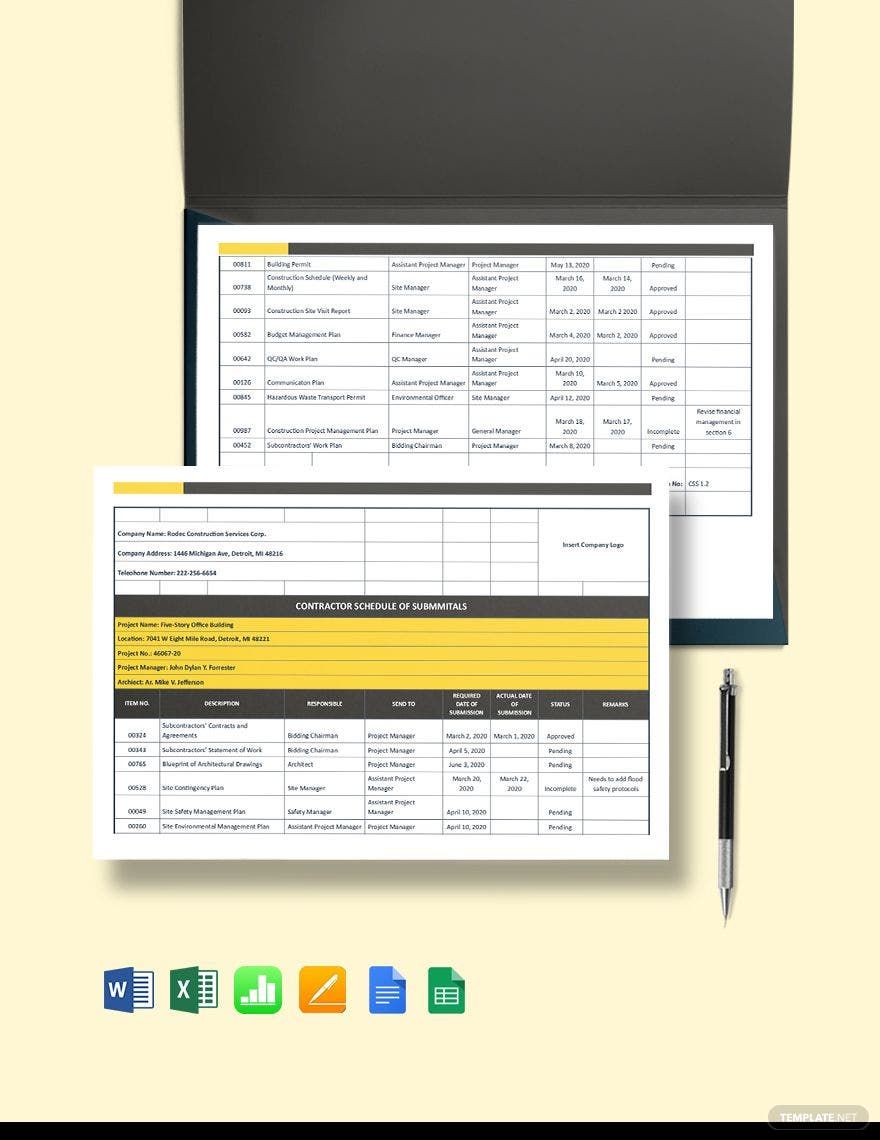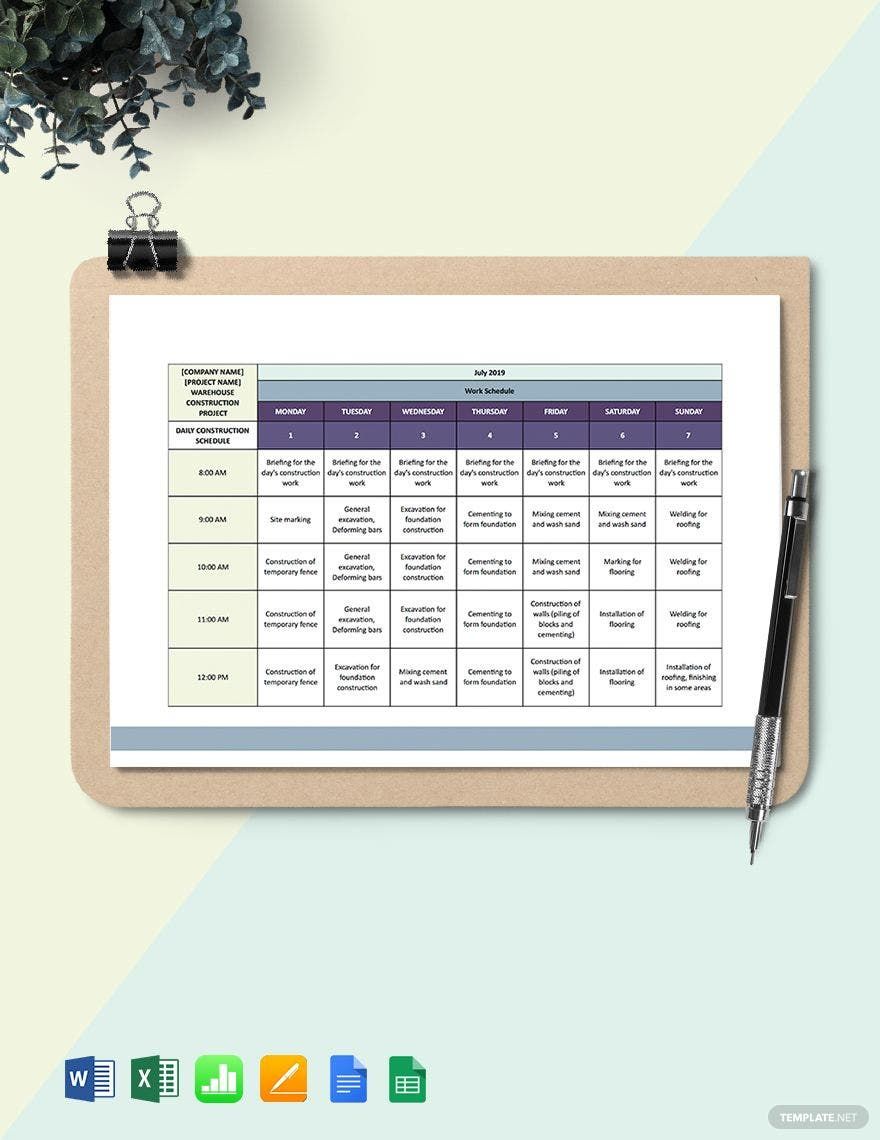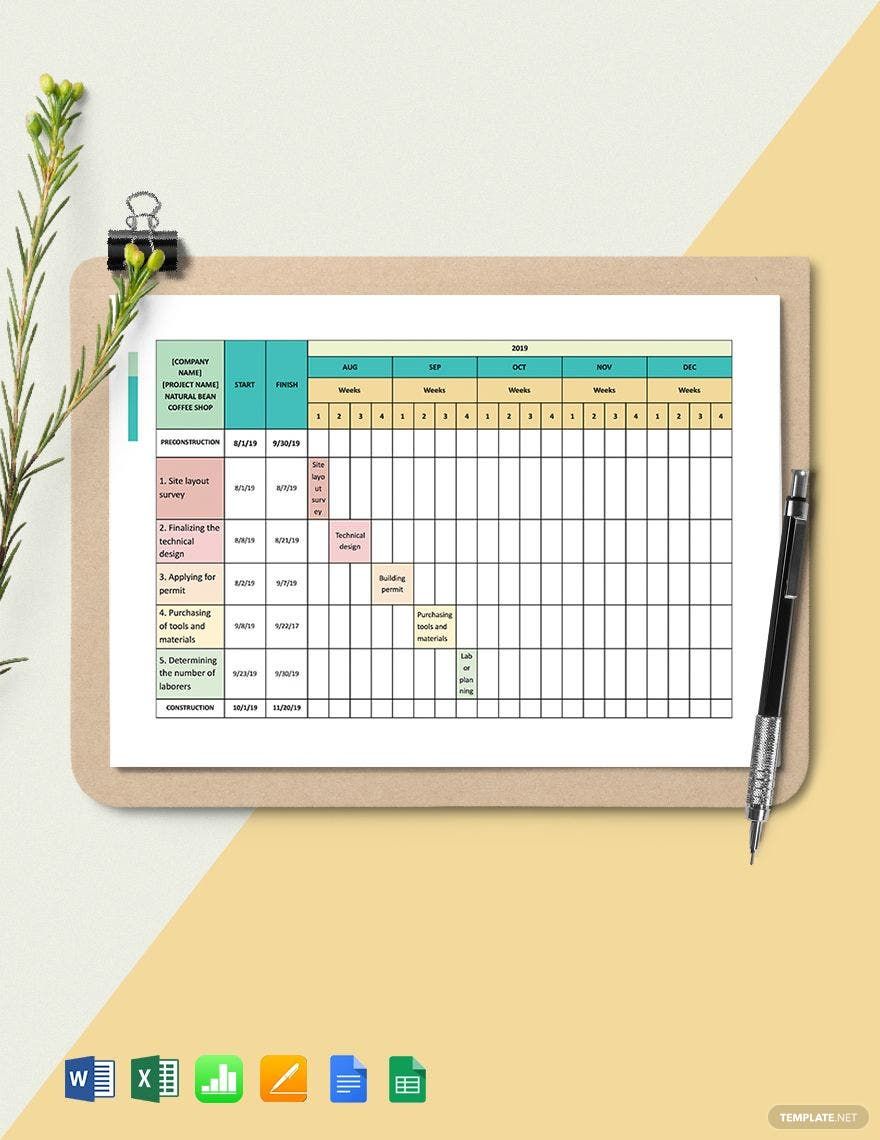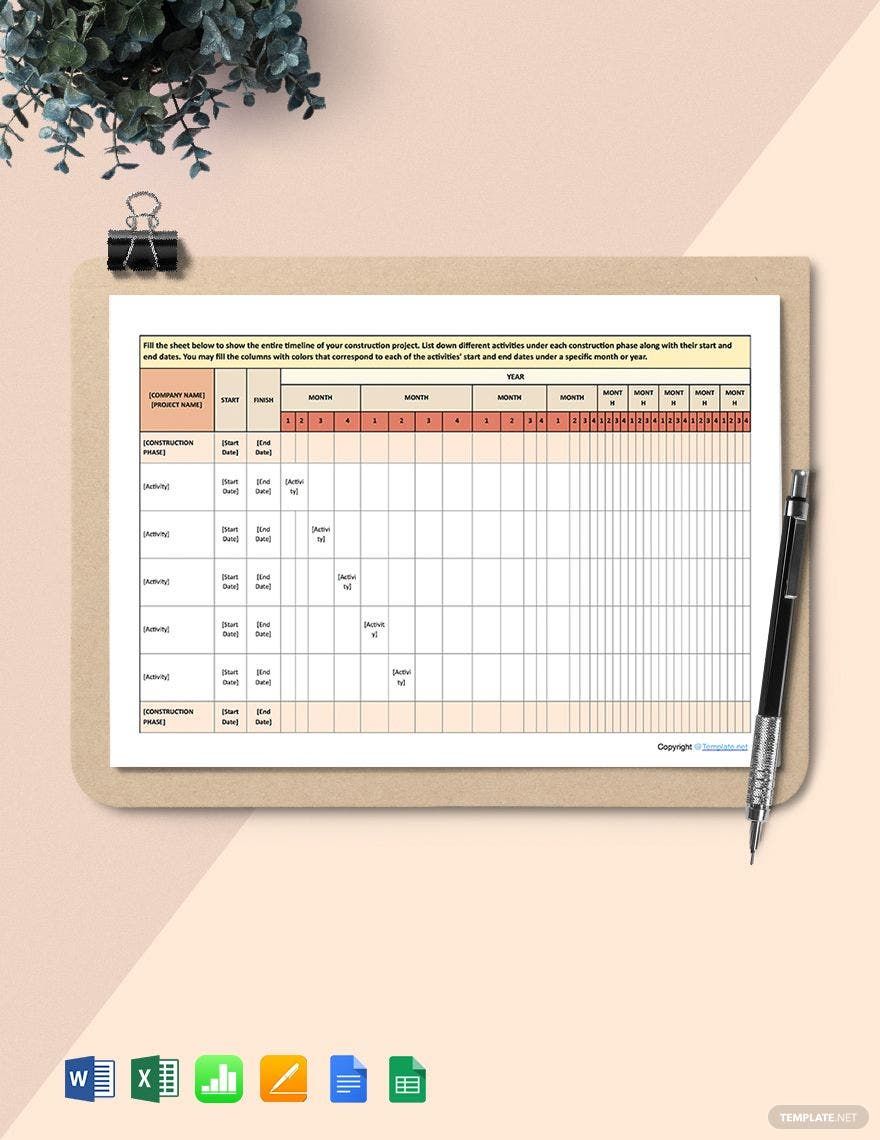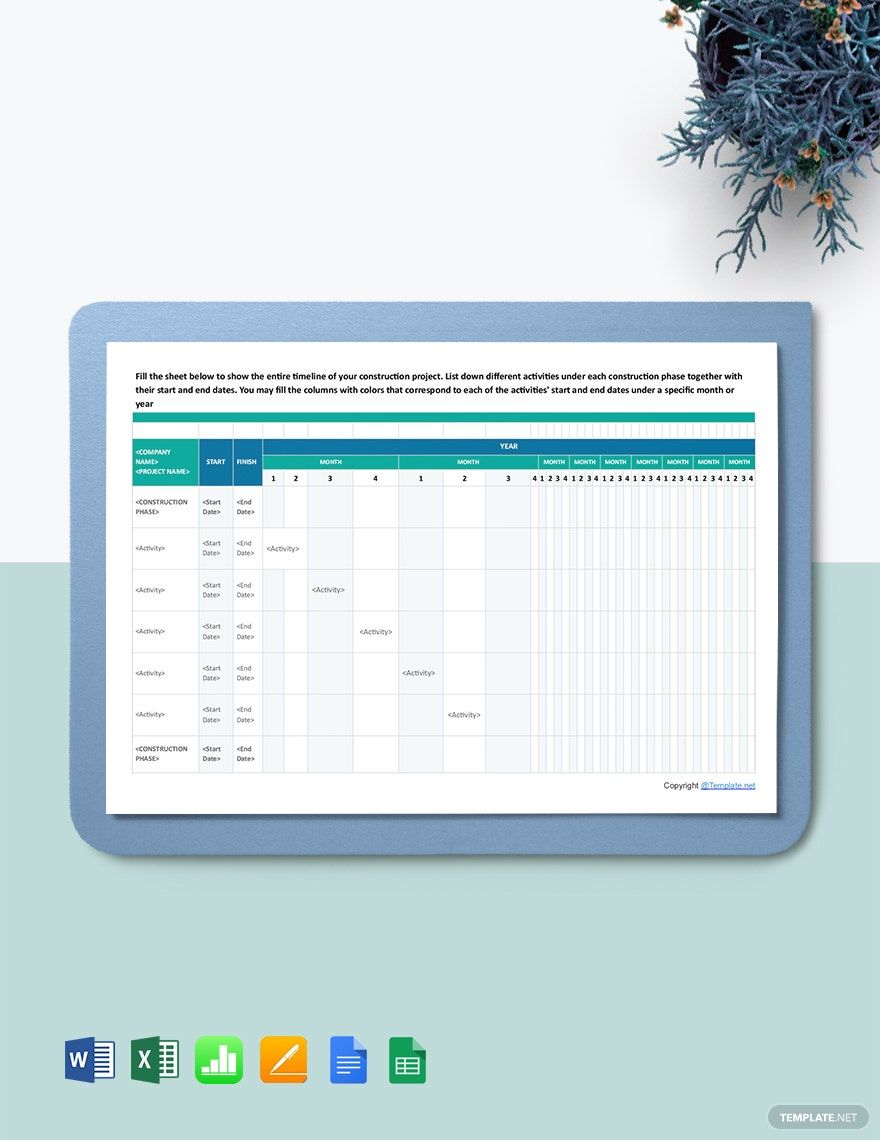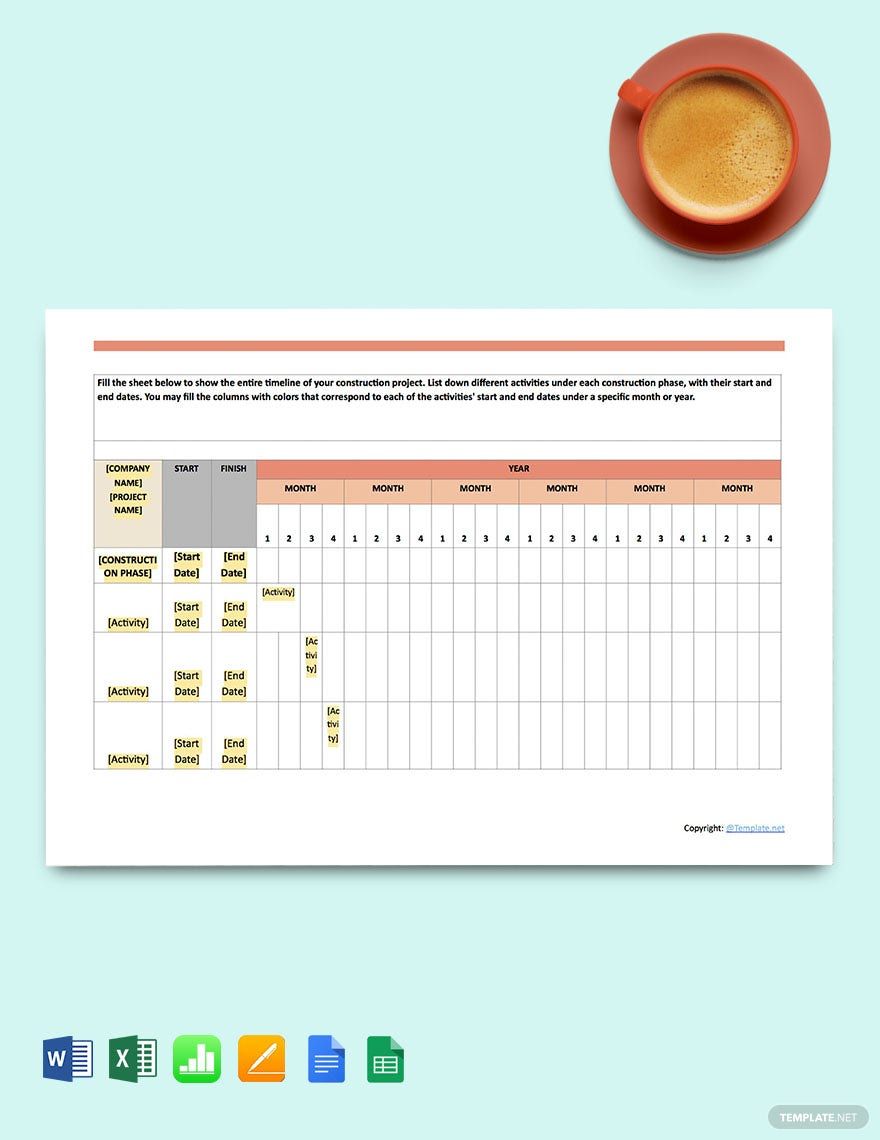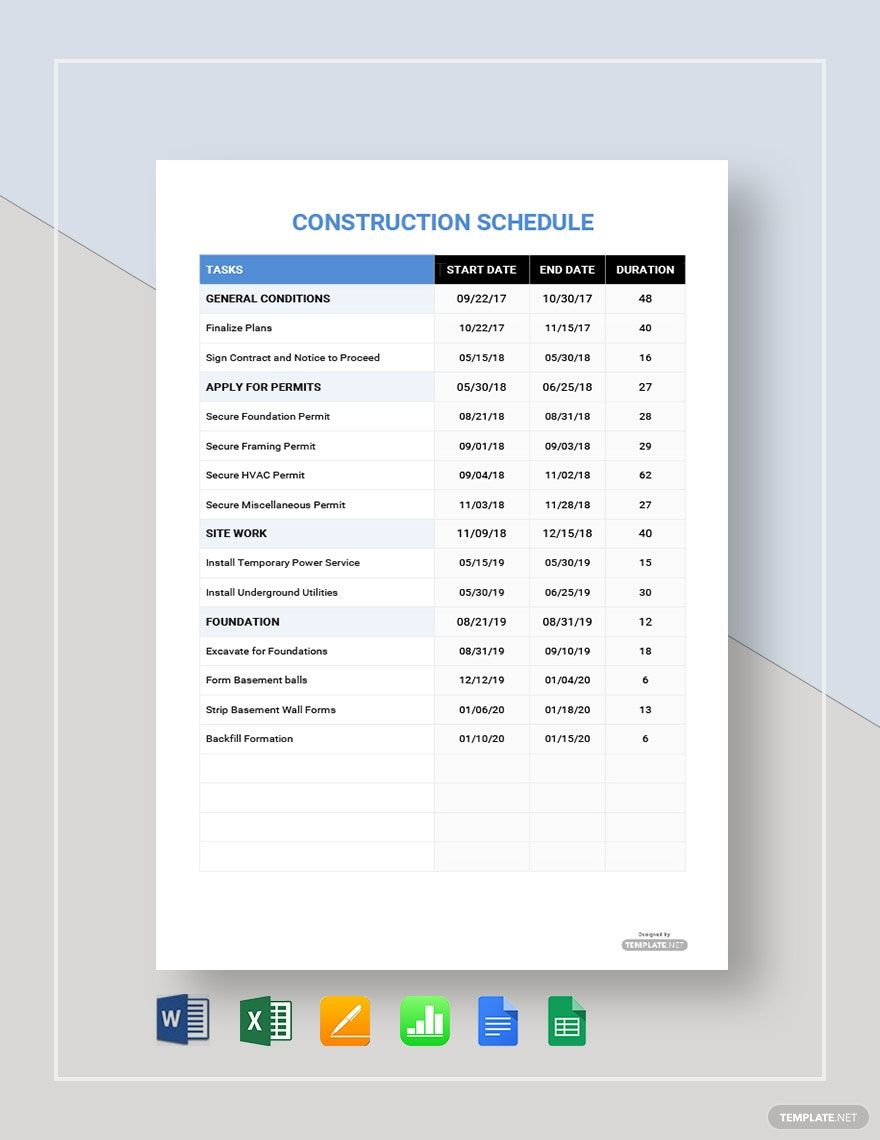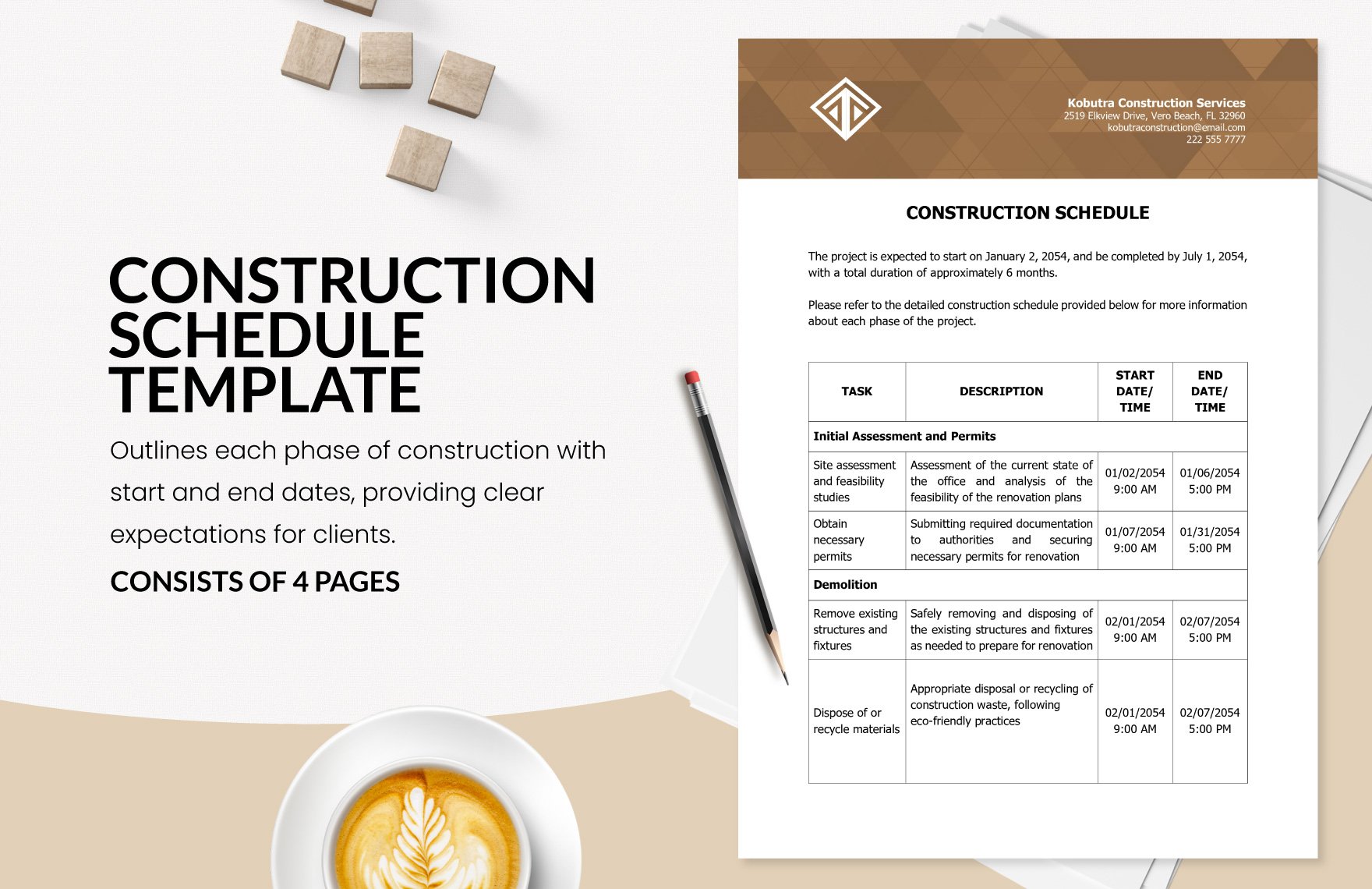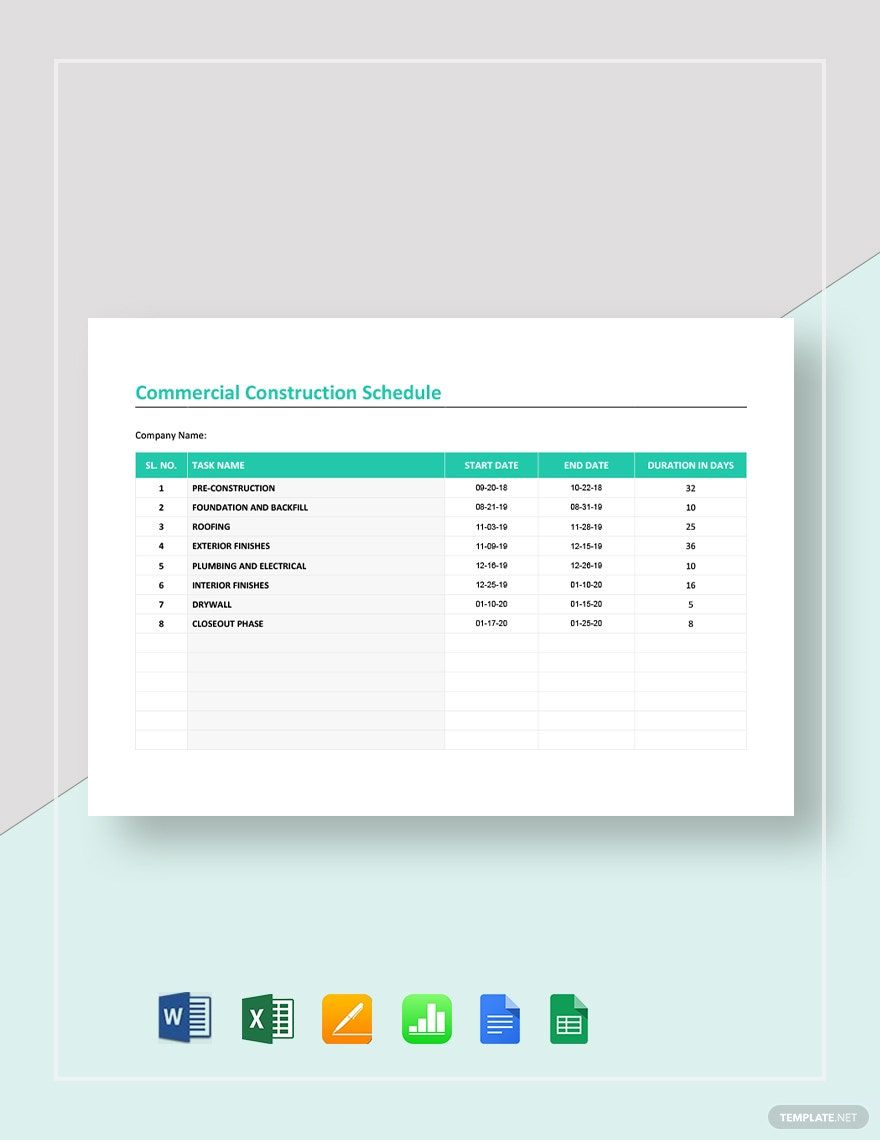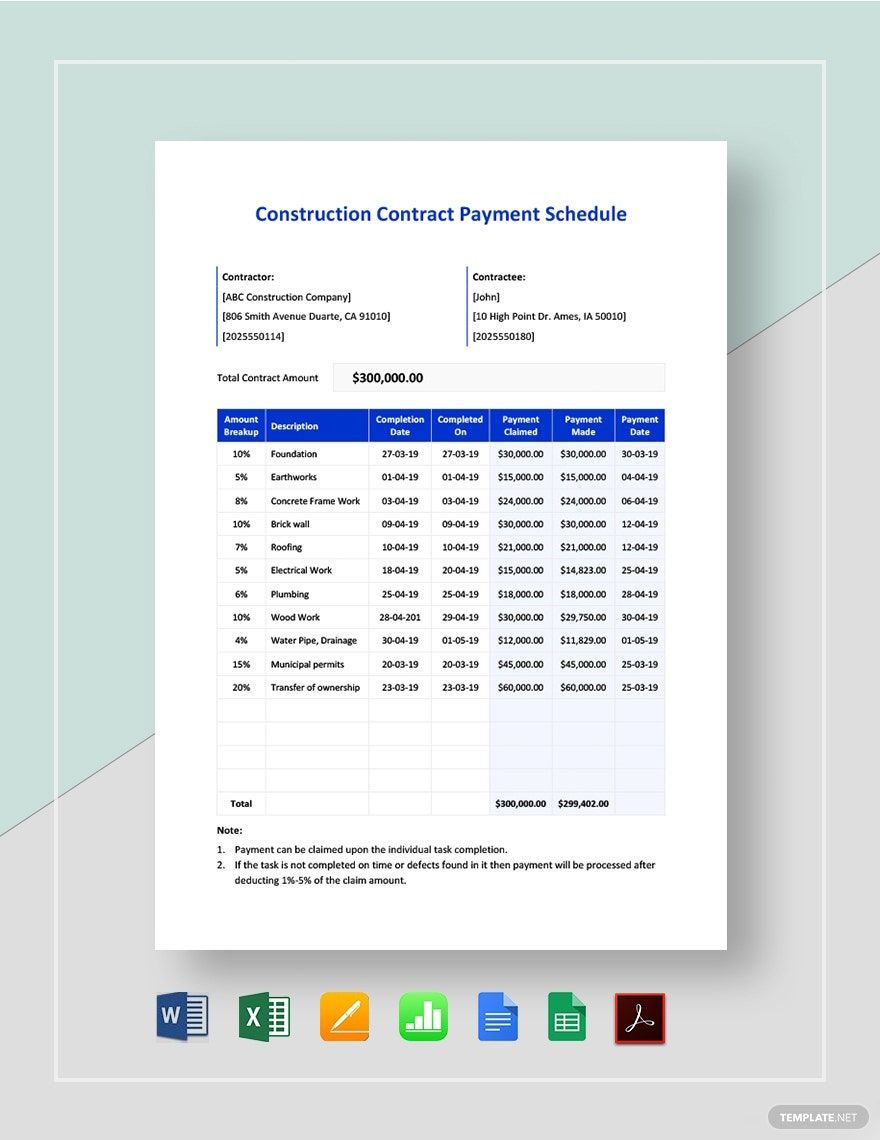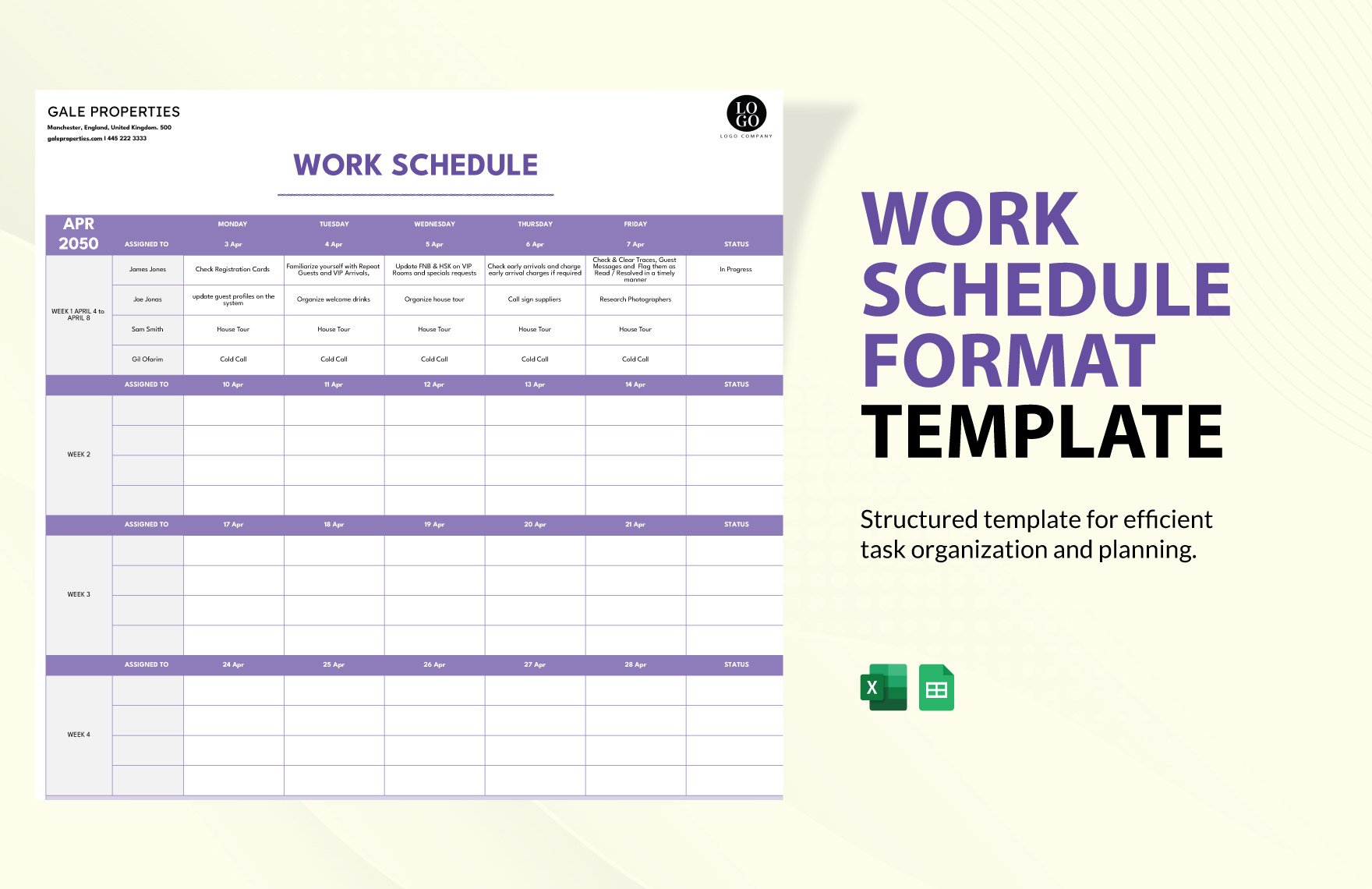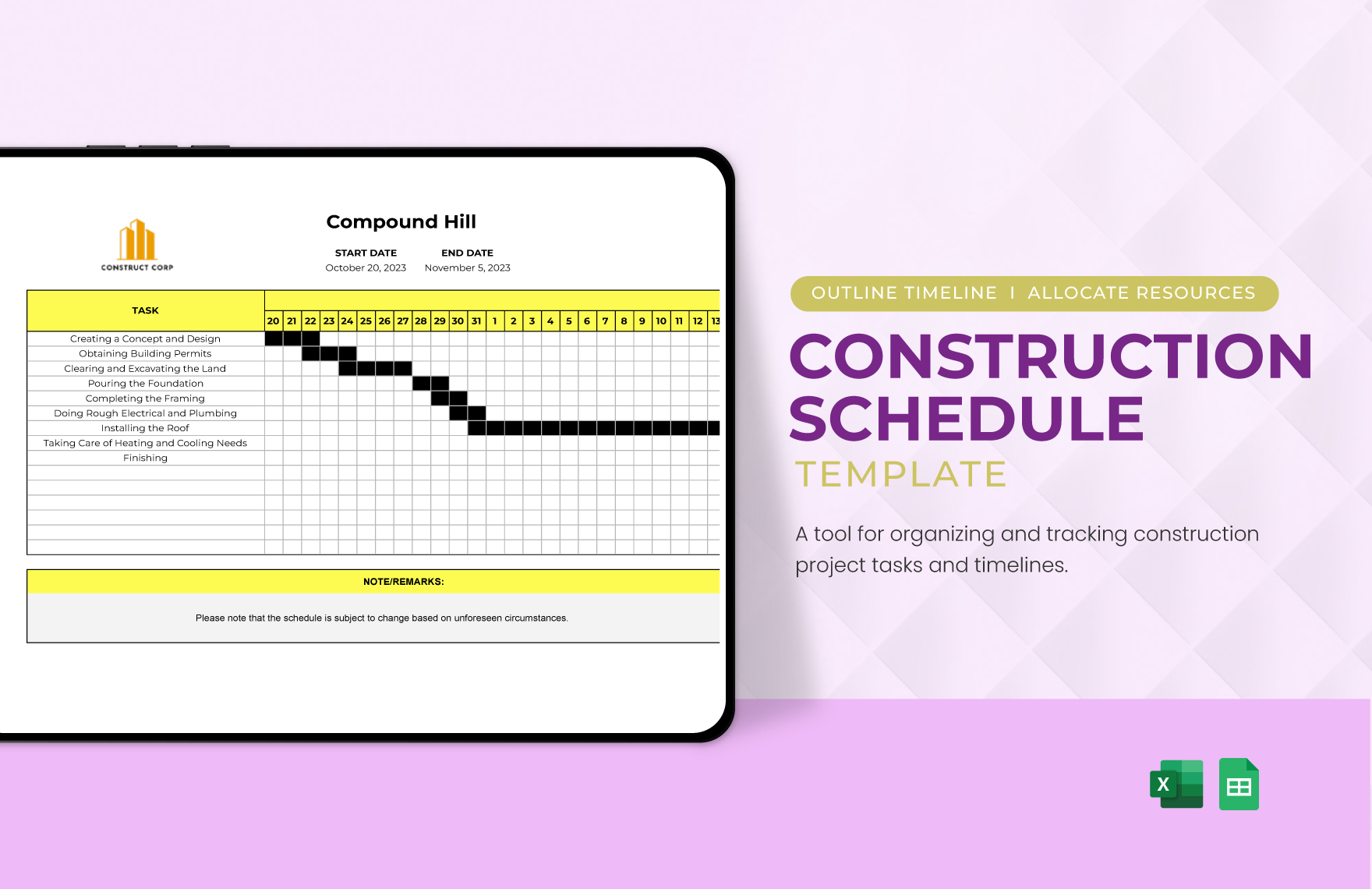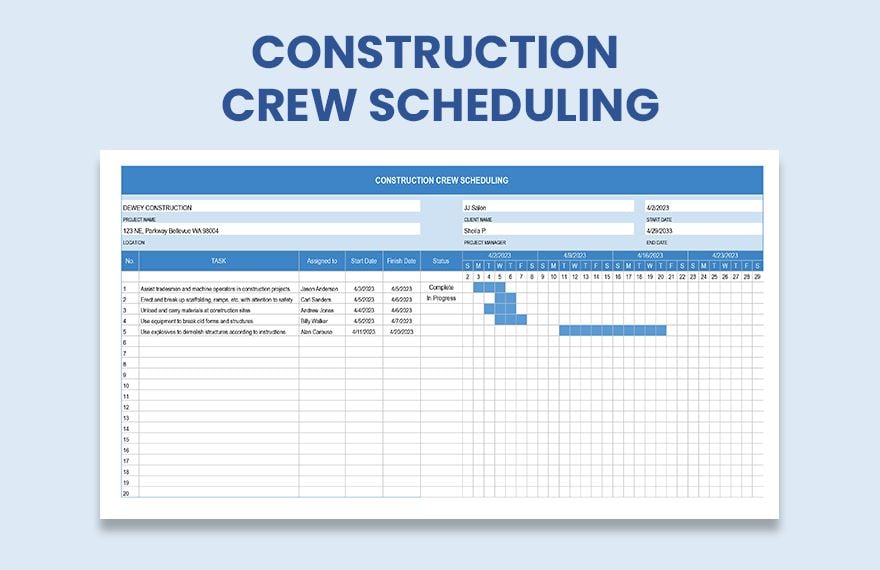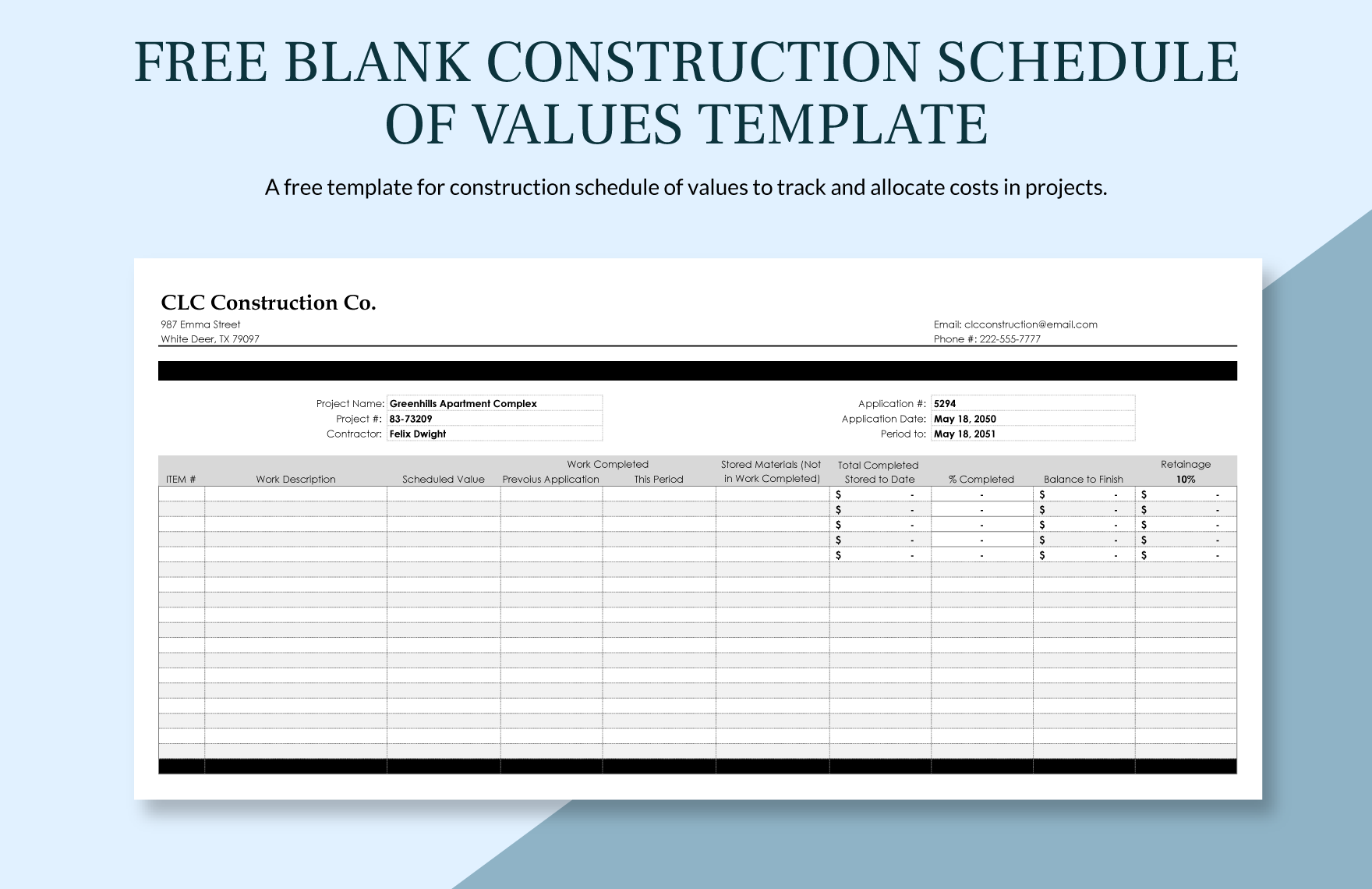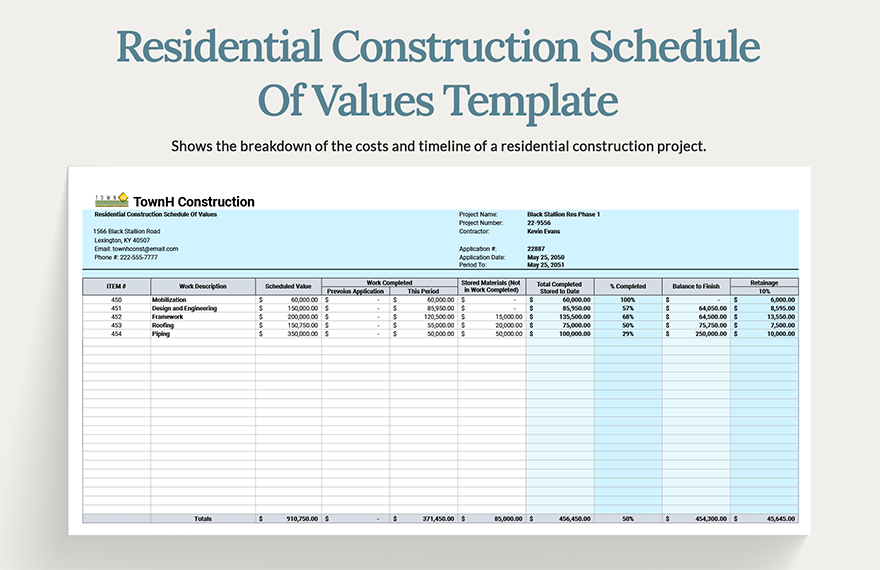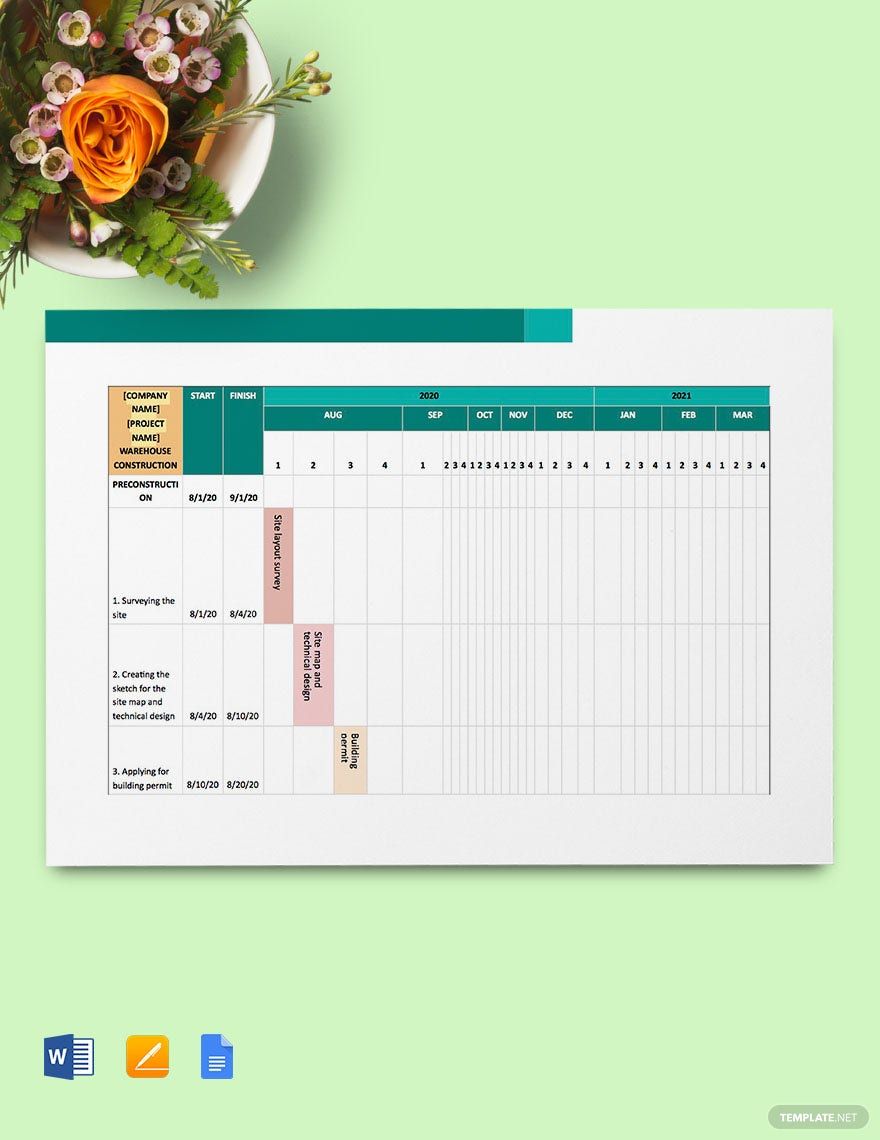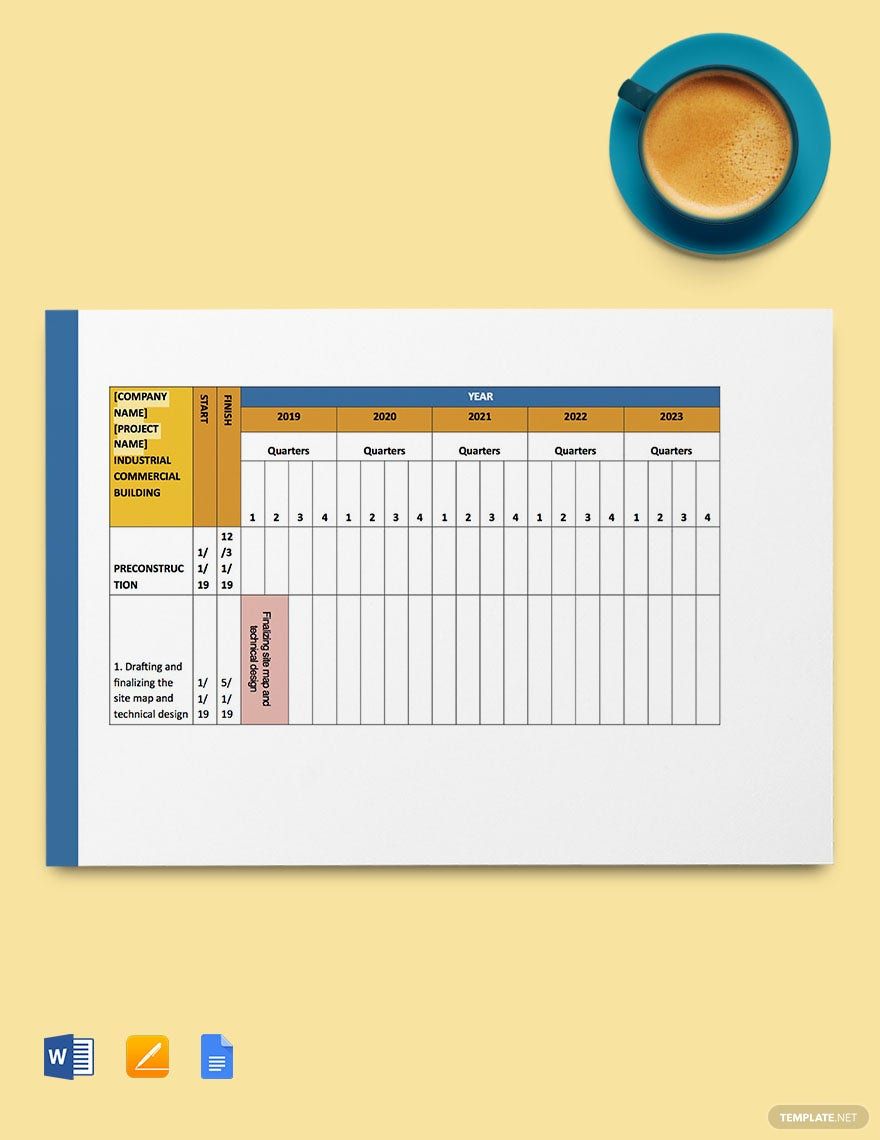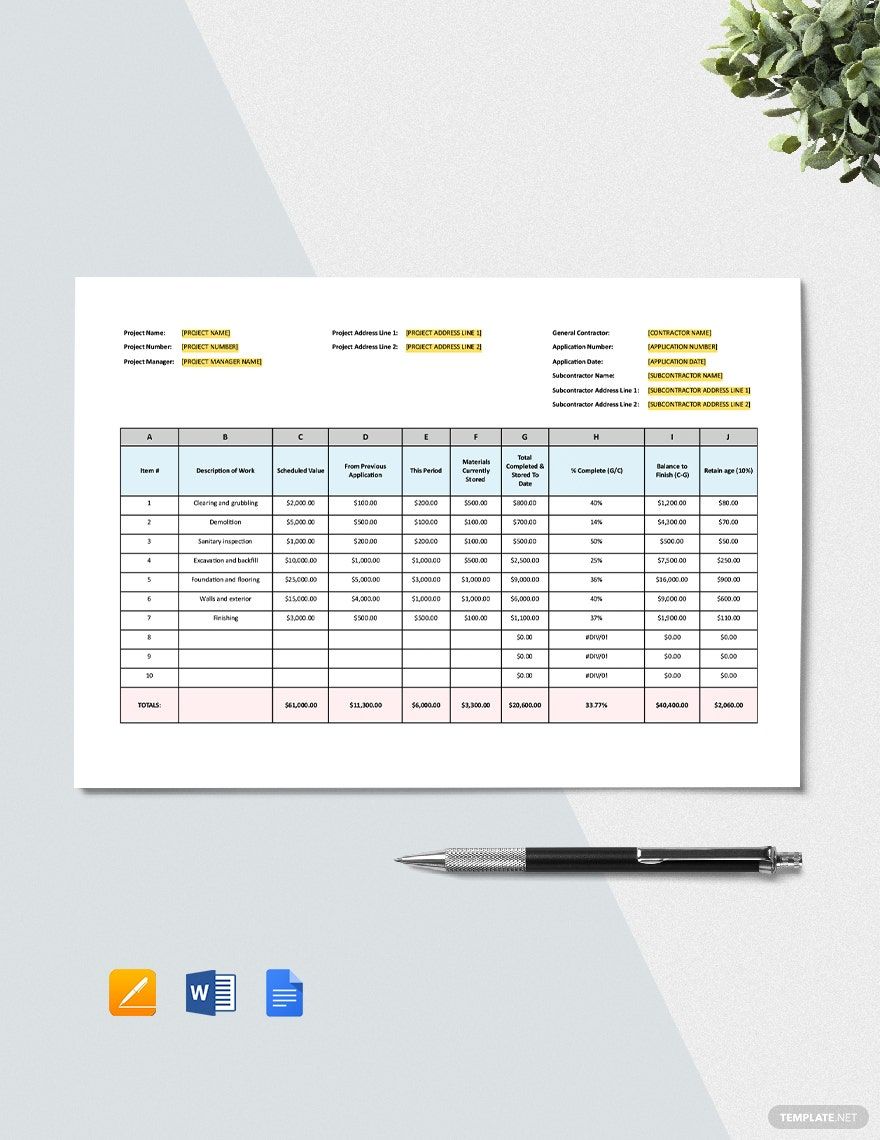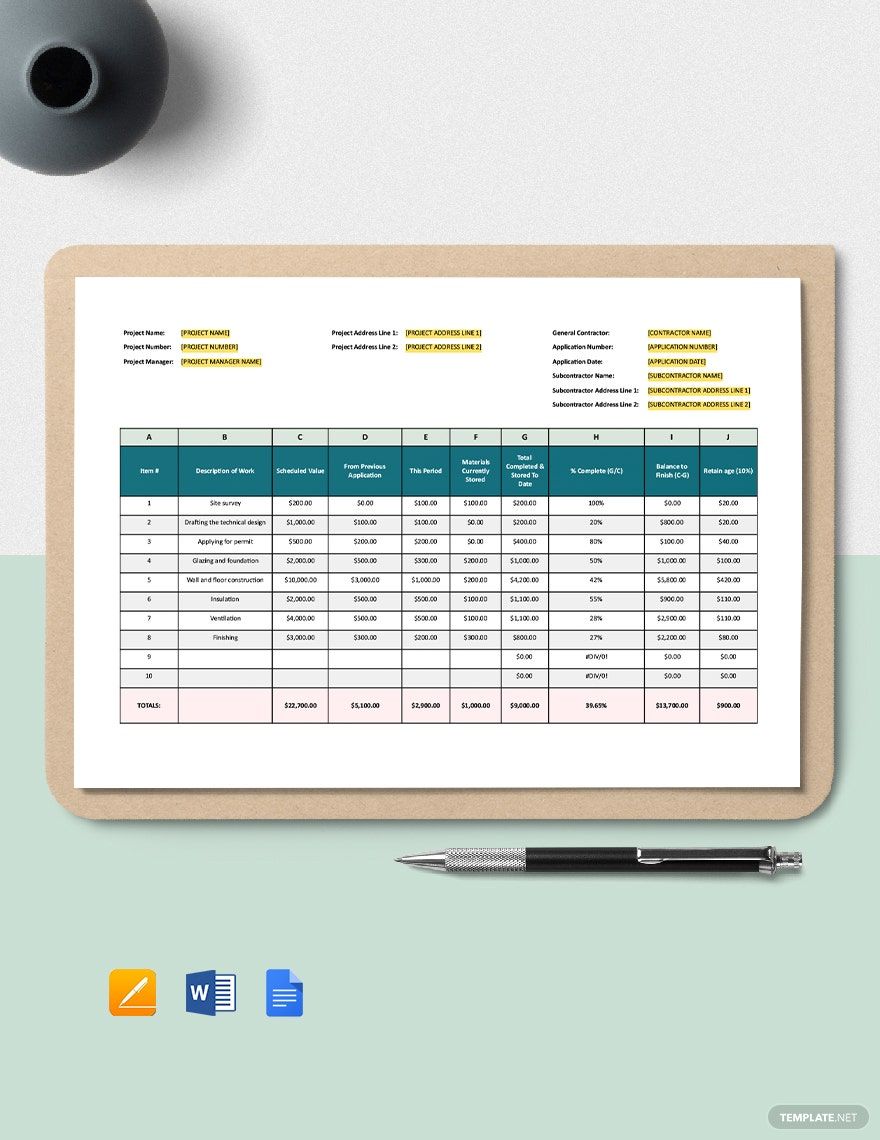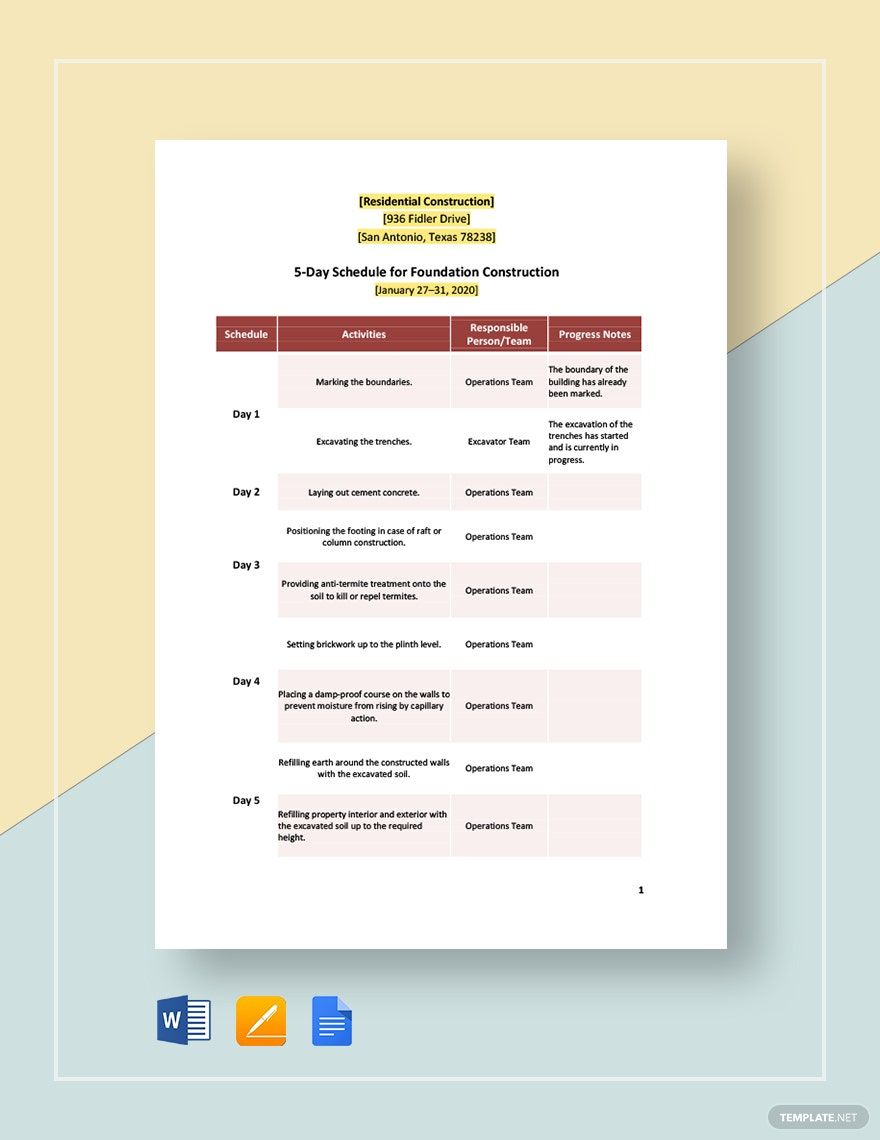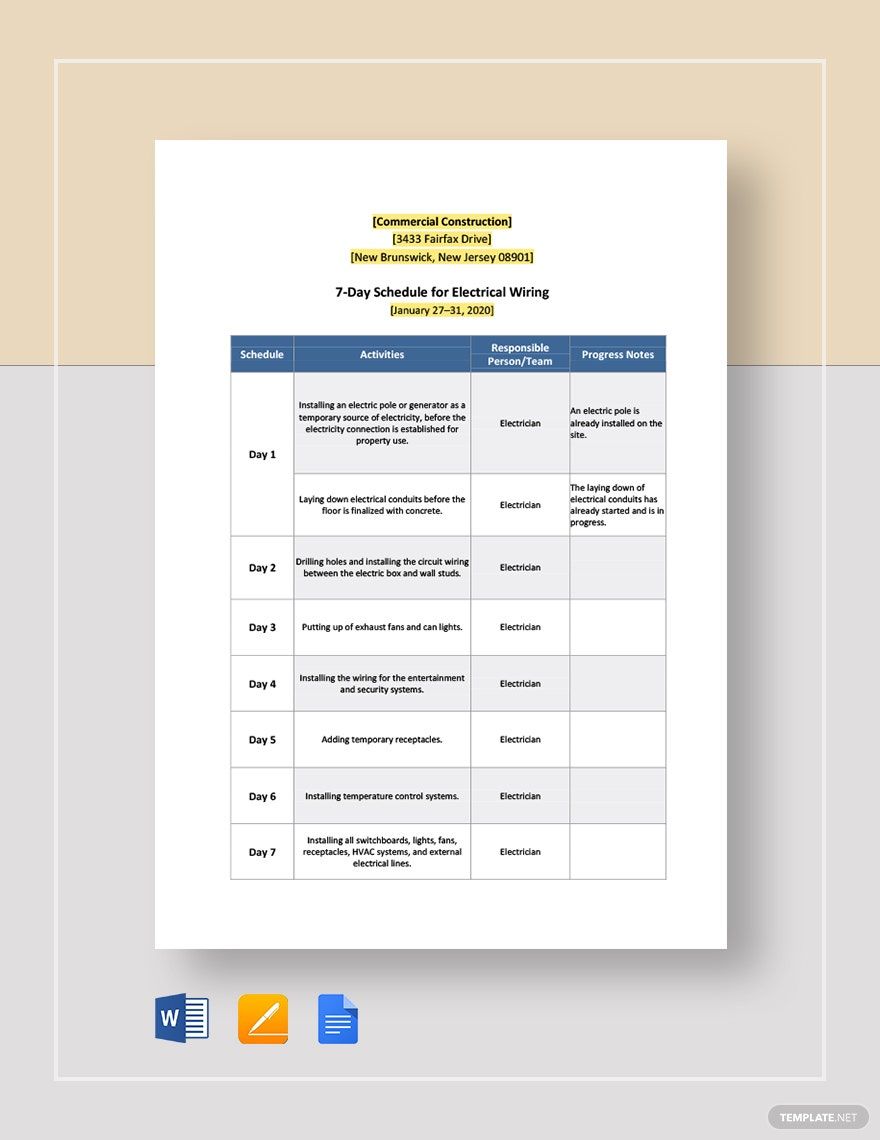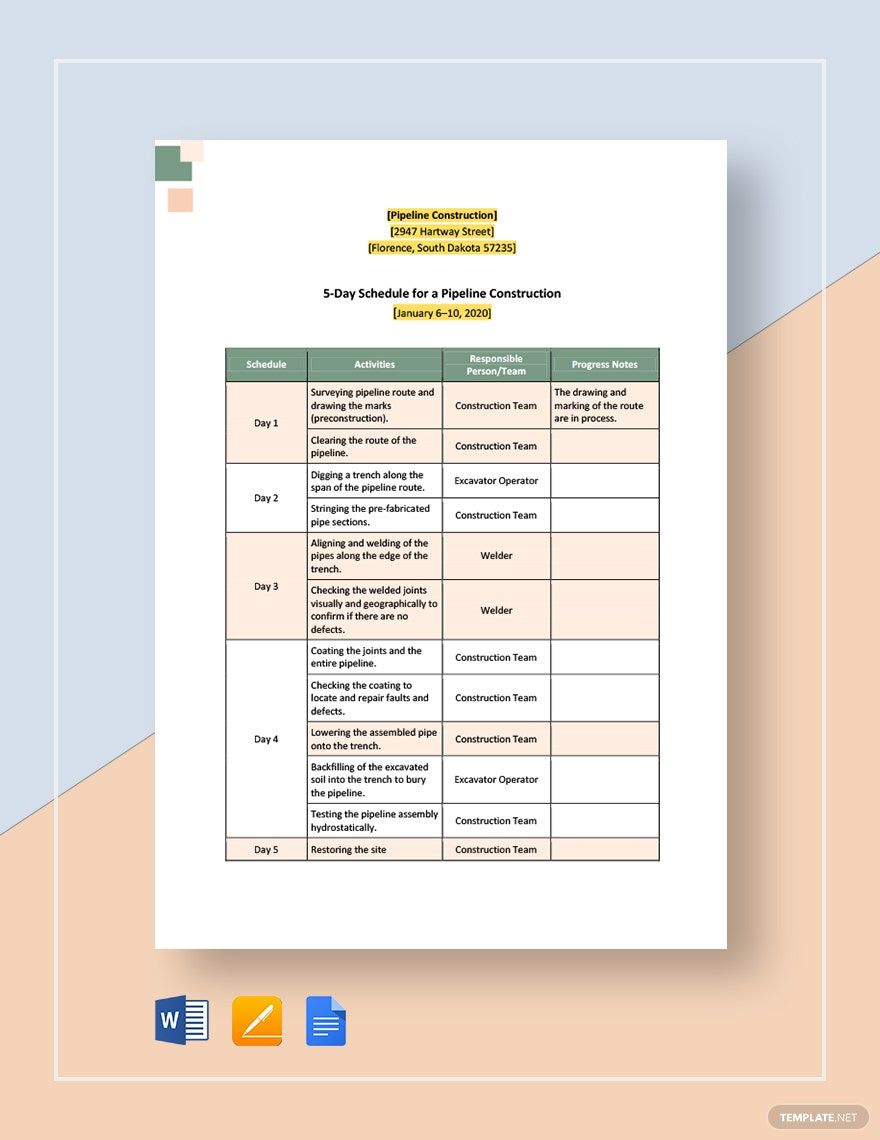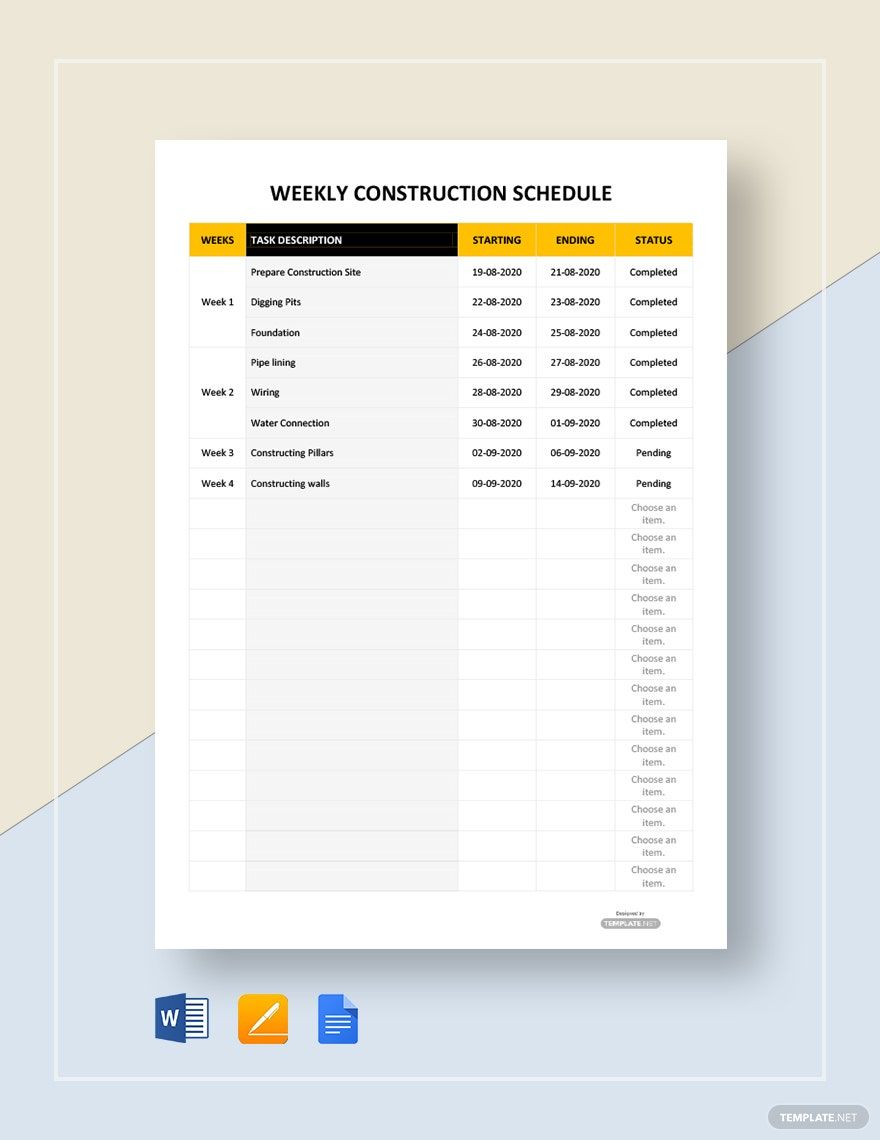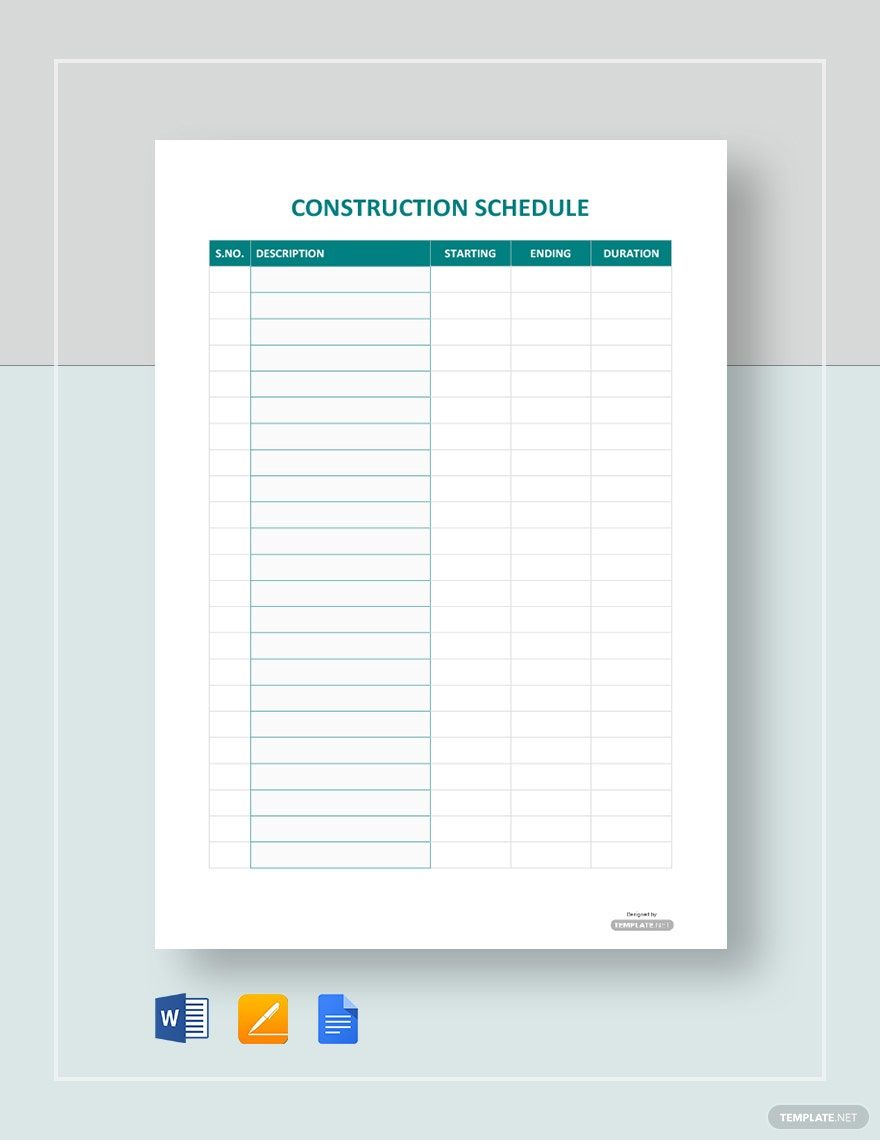Completing a construction project can be very difficult if there is no sense of organization in terms of what has to be done and when things have to be done. With our high-quality Construction Schedule Templates, that won't be an issue! Each template is accessible in MS Word, Pages, Google Docs, Excel, Google Sheets, Numbers. They can easily be customized to suit your construction project needs. Therefore, if you need to make a schedule for your commercial or residential construction, we have it prepared and ready for you. Start downloading them now or join our PRO subscription plan to enjoy even more of our professionally made templates today!
How to Make a Create a Construction Schedule?
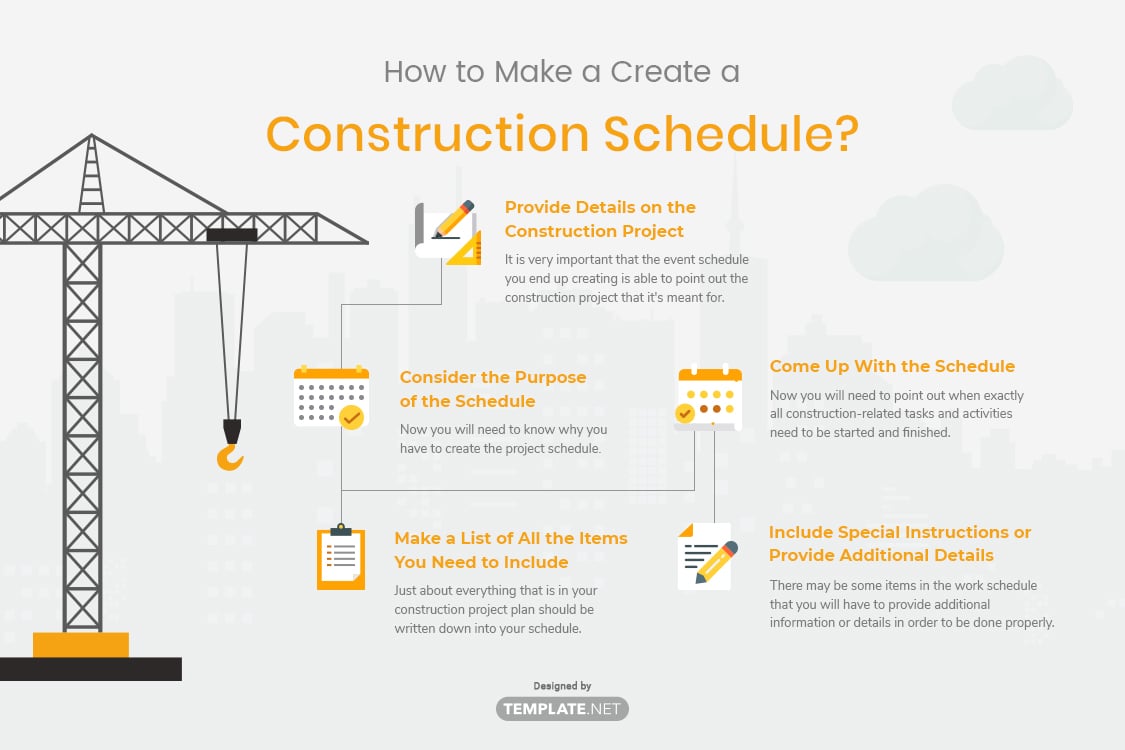
1. Provide details on the Construction Project
It is very important that the event schedule you end up creating is able to point out the construction project that it's meant for. So what you will need to do is to write down the complete name of the project title along with the dates in which it's expected to be started and finished. If necessary, you can provide other details such as the project's initial cost and the estimated overall cost.
2. Consider the Purpose of the Schedule
Now you will need to know why you have to create the project schedule. The purpose of doing this is to help you figure out what items you will be putting into the document. So are you making one for risk assessment purposes? Is it to help you keep track of a residential structure's construction progress? Once you have managed to identify this, then knowing what you should put into the construction schedule should come easy.
3. Make a List of All the Items You Need to Include
Just about everything that is in your construction project plan should be written down into your schedule. What this means is that you will have to make a list of all the things that you have to do or all the things that need to be acquired into the document. When doing this, you must provide details for each item. For example, industrial construction project schedules usually come with the full legal descriptions of every piece of material and equipment that needs to be either used or purchased.
4. Come Up With the Schedule
Now you will need to point out when exactly all construction-related tasks and activities need to be started and finished. The way to do this is by writing down the day and time in which they have to be done. But before you do so, you'll need to consider the order of every step towards the construction project's completion. Figure out how much time each task needs to be completed and think about the ones that have priority over the others. In short, observe proper time management. Once that's done, then you can schedule everything the way you mean to.
5. Include Special Instructions or Provide Additional Details
There may be some items in the work schedule that you will have to provide additional information or details in order to be done properly. Go through the document and check to see if there are any that require you to. If so, then be sure to point out things like names, places, prices, etc.


